@media screen and (min-width: 70em){.css-1c47y9x{color:var(--chakra-colors-blue\.brand);}} Tornado buy/sell second hands, ads and prices
The Tornado was for a long time the king of sport catamarans. She was the Open Olympic catamaran for 32 years! It is a unique, elegant, fast, long and wide catamaran.
An extremely fast boat around 3 buoys.


the last Tornado ads at the best price

Tornado Scheurer for sale in Arradon

Tornado CDK Technologies for sale in Lorient

Tornado or Stampede Wanted

Tornado sails for sale in Bordeaux

Tornado presentation
The tornado, the king of 20th century sport catamarans.
With a length of just over 6 metres and a width of 3 metres, the Tornado is a terribly efficient machine on a course between 3 buoys. Since 1996 the Tornado has been equipped with a spinnaker, a horn mainsail, a battened jib and a double trapeze.
The platform has been adapted to this new equipment, and is very similar to that of a Formula 18: a rigid or fabric spinnaker swallower is fitted along the spinnaker pole, a self-tacking jib track has been fitted on the forward beam, footstraps have been fitted at the rear of the floats to prevent the helmsman and crew from flying downwind.
An alliance of power and finesse, the Tornado is undoubtedly the fastest and most spectacular sports catamaran before they were fitted with foils!
For the crew, the ideal weight is 145 kilos.
Some figures of the Tornado catamaran :
Min price :
Max price :
Average price :
Median price :
Available boats :
Launch year :
Boat designer :
Used Tornado price table
| Advert title | Builder | Year | Price |
|---|---|---|---|
|
| Scheurer | 1992 | 4500€ |
| CDK Technologies | 2000 | 3000€ |
| - | 2000 | 1€ |
| - | 2000 | 895€ |
| - | 2000 | 900€ |
| - | 2000 | 900€ |
| - | 2000 | 400€ |
| - | 2000 | 3150€ |
| Marstrom | 1000€ |
- Barcos a motor de segunda mano
- Veleros de segunda mano
- Todos los barcos de segunda mano
- Barcos a motor nuevos
- Veleros nuevos
- Todos los barcos nuevos
- Marcas de barcos
- Modelos de barcos
- Ubicaciones
- Paquete de visibilidad de anuncios de barcos
- Tasación barco
- Preguntas frecuentes
Catamaránes de segunda mano
618 anuncios, nautitech 47, comar comet 460, cna tribellule 44.2, robertson and caine leopard 38, nautitech 40 open, lagoon 400 série 2, nautitech 441, aventura 36, outremer 40, louisiane 37, eleuthera 60, robertson and caine leopard 384, lagoon 52 f, lagoon 410 série 2, ¿por qué confiar en nosotros, 1723 barcos vendidos gracias a nosotros, ¿qué es un catamarán, características de un catamarán.
El catamarán es un velero multicasco: está compuesto por dos cascos paralelos unidos por un cuerpo rígido. Estos son más finos que los de los monocascos, lo que les confiere una mayor velocidad debido a la menor resistencia al agua. También permite una mejor estabilidad y más espacio en la cubierta. Aunque se gane en velocidad, eso no implica necesariamente que se perciba. Debido a la estabilidad de los catamaranes, las sensaciones son menores que las que se pueden sentir en un monocasco. Como cualquier velero, el catamarán se propulsa con la fuerza del viento y el plano antideriva está compuesto por orzas o aletas situadas en los flotadores.
Históricamente, los primeros catamaranes que existieron fueron los de la Polinesia hace 4000 años, donde la población local usaba canoas con un péndulo que servía como flotador. El primer catamarán occidental no llegó hasta 1662, diseñado por William Petty, un filósofo y economista inglés.
Cuando se está a punto de comprar un catamarán, es importante tener en cuenta varias de sus características. En primer lugar, a pesar de su ligera escora, los catamaranes se balancean más de delante hacia detrás, espcialmente si hace mal tiempo. Además, el costo de mantenimiento es a menudo más alto, es necesario tener en cuenta su longitud y accesorios, así como sus dos motores. Por último, dado su gran tamaño, este tipo de multicasco tendrá más dificultades para entrar en un puerto, lo que a veces requerirá amarrar fuera del puerto en una boya de amarre y llegar a este en una embarcación auxiliar, ya sea un bote, una barca, un semirrígido o un bote neumático.
¿Cuáles son las ventajas y desventajas de un catamarán?
Para cualquier marinero tentado por la vela, el catamarán tiene muchas ventajas:
- Está menos sujeto a la escora, por lo que la navegación es más agradable,
- es más rápido cuando el viento sopla a favor,
- al tener dos motores, es más maniobrable a motor, lo que facilita la entrada en los puertos,
- tiene un calado poco profundo que le permite navegar en aguas poco profundas.
Sin embargo, para aquellos que prefieren las emociones, es más prudente decantarse por un monocasco, ya que un catamarán es generalmente más pesado y será más estable y menos deportivo.
Equipar un catamarán
A partir de 12 metros, el espacio a bordo de un catamarán será más grande y más cómodo que el de un monocasco del mismo tamaño. Esto proporcionará más espacio para el día a día, con una amplia ¡cocina, un gran salón y una cabina espaciosa. Esta característica se agradecerá cuando navegue con varias personas, ya sea con amigos o familiares. Además, el número de cabinas se incrementará a 4, una en cada extremo de los cascos, combinando privacidad y calma.
¿Estás listo para la aventura? Explora nuestros catamaranes de segunda mano y ocasión en Band of Boats y navega a toda vela hacia tu destino.
Los otros tipos de veleros de segunda mano
Búsquedas relacionadas.
weird science research topics
The 10 most ridiculous scientific studies.

I mportant news from the world of science: if you happen to suffer a traumatic brain injury, don’t be surprised if you experience headaches as a result. In other breakthrough findings: knee surgery may interfere with your jogging, alcohol has been found to relax people at parties, and there are multiple causes of death in very old people. Write the Nobel speeches, people, because someone’s going to Oslo!
Okay, maybe not. Still, every one of those not-exactly jaw-dropping studies is entirely real—funded, peer-reviewed, published, the works. And they’re not alone. Here—with their press release headlines unchanged—are the ten best from from science’s recent annals of “duh.”
Study shows beneficial effect of electric fans in extreme heat and humidity: You know that space heater you’ve been firing up every time the temperature climbs above 90º in August? Turns out you’ve been going about it all wrong. If you don’t have air conditioning, it seems that “fans” (which move “air” with the help of a cunning arrangement of rotating “blades”) can actually make you feel cooler. That, at least, was the news from a study in the Journal of the American Medical Association (JAMA) last February. Still to come: “Why Snow-Blower Use Declines in July.”
Study shows benefit of higher quality screening colonoscopies: Don’t you just hate those low-quality colonoscopies? You know, the ones when the doctor looks at your ears, checks your throat and pronounces, “That’s one fine colon you’ve got there, friend”? Now there’s a better way to go about things, according to JAMA, and that’s to be sure to have timely, high quality screenings instead. That may be bad news for “Colon Bob, Your $5 Colonoscopy Man,” but it’s good news for the rest of us.
Holding on to the blues: Depressed individuals may fail to decrease sadness: This one apparently came as news to the folks at the Association for Psychological Science and they’ve got the body of work to stand behind their findings. They’re surely the same scientists who discovered that short people often fail to increase inches, grouchy people don’t have enough niceness and folks who wear dentures have done a terrible job of hanging onto their teeth. The depression findings in particular are good news, pointing to exciting new treatments based on the venerable “Turn that frown upside down” method.
Quitting smoking after heart attack reduces chest pain, improves quality of life: Looks like you can say goodbye to those friendly intensive care units that used hand out packs of Luckies to post-op patients hankering for a smoke. Don’t blame the hospitals though, blame those buzz-kills folks at the American Heart Association who are responsible for this no-fun finding. Next in the nanny-state crosshairs: the Krispy Kreme booth at the diabetes clinic.
Older workers bring valuable knowledge to the job: Sure they bring other things too: incomprehensible jokes, sensible shoes, the last working Walkman in captivity. But according to a study in the Journal of Applied Psychology , they also bring what the investigators call “crystallized knowledge,” which comes from “knowledge born of experience.” So yes, the old folks in your office say corny things like “Show up on time,” “Do an honest day’s work,” and “You know that plan you’ve got to sell billions of dollars worth of unsecured mortgages, bundle them together, chop them all up and sell them to investors? Don’t do that.” But it doesn’t hurt to humor them. They really are adorable sometimes.
Being homeless is bad for your health: Granted, there’s the fresh air, the lean diet, the vigorous exercise (no sitting in front of the TV for you!) But living on the street is not the picnic it seems. Studies like the one in the Journal of Health Psychology show it’s not just the absence of a fixed address that hurts, but the absence of luxuries like, say, walls and a roof. That’s especially true in winter—and spring, summer and fall too, follow-up studies have found. So quit your bragging, homeless people. You’re no healthier than the rest of us.
The more time a person lives under a democracy, the more likely she or he is to support democracy: It’s easy to fall for a charming strong-man—that waggish autocrat who promises you stability, order and no silly distractions like civil liberties and an open press. Soul-crushing annihilation of personal freedoms? Gimme’ some of that, big boy. So it came as a surprise that a study in Science found that when you give people even a single taste of the whole democracy thing, well, it’s like what they say about potato chips, you want to eat the whole bag. But hey, let’s keep this one secret. Nothing like a peevish dictator to mess up a weekend.
Statistical analysis reveals Mexican drug war increased homicide rates: That’s the thing about any war—the homicide part is kind of the whole point. Still, as a paper in The American Statistician showed, it’s always a good idea to crunch the numbers. So let’s run the equation: X – Y = Z, where X is the number of people who walked into the drug war alive, Y is the number who walked out and Z is, you know, the dead guys. Yep, looks like it adds up. (Don’t forget to show your work!)
Middle-aged congenital heart disease survivors may need special care: Sure, but they may not, too. Yes you could always baby them, like the American Heat Association recommends. But you know what they say: A middle-aged congenital heart disease survivor who gets special care is a lazy middle-aged congenital heart disease survivor. Heck, when I was a kid, our middle-aged congenital heart disease survivors worked for their care—and they thanked us for it too. This is not the America I knew.
Scientists Discover a Difference Between the Sexes: Somewhere, in the basement warrens of Northwestern University, dwell the scientists who made this discovery—androgynous beings, reproducing by cellular fission, they toiled in darkness, their light-sensitive eye spots needing only the barest illumination to see. Then one day they emerged blinking into the light, squinted about them and discovered that the surface creatures seemed to come in two distinct varieties. Intrigued, they wandered among them—then went to a kegger and haven’t been seen since. Spring break, man; what are you gonna’ do?
Read about changes to Time.com
More Must-Reads from TIME
- How Kamala Harris Knocked Donald Trump Off Course
- Introducing TIME's 2024 Latino Leaders
- George Lopez Is Transforming Narratives With Comedy
- How to Make an Argument That’s Actually Persuasive
- What Makes a Friendship Last Forever?
- 33 True Crime Documentaries That Shaped the Genre
- Why Gut Health Issues Are More Common in Women
- The 100 Most Influential People in AI 2024
Write to Jeffrey Kluger at [email protected]
To revisit this article, visit My Profile, then View saved stories .
- The Big Story
- Newsletters
- Steven Levy's Plaintext Column
- WIRED Classics from the Archive
- WIRED Insider
- WIRED Consulting
The 10 most absurd published scientific papers
This article was taken from the April issue of Wired UK magazine. Be the first to read Wired's articles in print before they're posted online, and get your hands on loads of additional content by subscribing online
Not many grad students see the funny side of science. Meredith Carpenter and Lillian Fritz-Laylin, from the Molecular and Biology Department at UC Berkeley, not only see it but blog it. Their site, ncbirofl.com (National Center for Biotechnology Information, Rolling On the Floor Laughing), is a repository for absurd published scientific papers. Here is their top ten...
Optimising the sensory characteristics and acceptance of canned cat food: use of a human taste panel. (Journal of Animal Physiology and Animal Nutrition)
Effects of cocaine on honeybee dance behaviour. (Journal of Experimental Biology)
Swearing as a response to pain. (NeuroReport)
Pigeons can discriminate "good" and "bad" paintings by children. (Animal Cognition)
The "booty call": a compromise between men's and women's ideal mating strategies. (The Journal of Sex Research)
Intermittent access to beer promotes binge-like drinking in adolescent but not adult Wistar rats. (Alcohol)
Fellatio by fruit bats prolongs copulation time. (PLoS One)
More information than you ever wanted: does Facebook bring out the green-eyed monster of jealousy? (Cyberpsychology and Behavior)
Are full or empty beer bottles sturdier and does their fracture-threshold suffice to break the human skull? (Journal of Forensic and Legal Medicine)
The nature of navel fluff. (Medical Hypotheses)
This article was originally published by WIRED UK

24 Strange Scientific Studies

Don't miss an episode— subscribe here! (Images and footage provided by our friends at Shutterstock . This transcript comes courtesy of Nerdfighteria Wiki. )
1. Hi, I'm John Green. Welcome to my salon. This is mental_floss on YouTube, and did you know that in 2010 a researcher trained pigeons to tell the difference between good and bad paintings made by children? The pigeons were positively reinforced when they pecked at good paintings and after a while, they were able to determine which ones were good, even observing color and pattern cues in paintings they'd never seen before!
And that's the first of many odd scientific studies I'm going to share with you today.
2. A study was conducted at the Babraham Institute to determine whether sheep were capable of recognizing the faces of other sheep. When the study concluded in 2001, the researchers had discovered that sheep could recognize the faces of fifty sheep about 80% of the time, and they remembered them for over two years, which is much better than my own sheep facial-recognition.
3. In 2011, researchers at Albany Medical College played songs by Beethoven and Miles Davis to rats, learning that the rats preferred silence, but would rather hear Beethoven than Miles Davis. Then the researchers injected some rats with cocaine while the rats were listening to Miles Davis because, y'know, why not? At this point they weren't even conducting a study, they were just enjoying some jazz, and dosing rats with cocaine, as you do. But anyway, they learned that those rats preferred the jazz music, even after the cocaine was out of their systems.
4. Dr. Allan Walker Blair, an assistant professor of pathology and bacteriology at the University of Alabama, allowed a black widow spider to bite him in the 1930s. There was little research on the spider at the time, so he wanted to document his experience with the bite. Unsurprisingly, he discovered that it caused what he described as "excruciating pain". For the record, he lived, but he died of cardiac arrest a decade later, which was probably related to the experience.
5. Speaking of horrible experiments performed on oneself, in the '90s, veterinarian Robert Lopez took ear mites from a cat's ear and placed them in his own ear. He was trying to determine whether humans can get mites from cats. Turns out that we can, but he still repeated the experiment twice , and then got it published in the journal of American Veterinary Medical Association.
6. In the 1960s at Penn State University, an experiment was conducted on a male turkey to see how minimal a stimuli had to be for it to be considered a mate. The researchers kept removing components of a turkey until it was just a turkey head on a stick, and the male turkey still tried to mate with it.
7. A 2012 study found that human male athletes experienced increases in testosterone in their saliva while doing squats after watching short videos containing either erotic, humorous, or aggressive content.
8. In 1976, a group of researchers did a study to determine whether the speed and flow of men's urination was affected by people being too near them. And I can just tell you—yes. But anyway, in order to do this, they left an observer with a periscope in a public restroom for extended periods of time. He found that the closer a man had to pee next to another man, the longer it took for him to start urinating. He also peed, on average, less if someone was standing next to him.
9. Speaking of urine-related studies, Peter Snider, a professor of Neurology at Brown University, discovered that people who have to pee really badly actually have increased levels of cognitive impairment. That study, by the way, cost him a total of $1.25 to complete.
10. In 2012, a group of psychologists found that, quote, "leaning to the left makes the Eiffel Tower seem smaller." Basically, when people are leaning, their ability to estimate things like quantity and size is affected because we tend to assume that smaller things go on the left and larger things go on the right. It may be a result of bias among people who read from left to right. Which we should follow up a study with people who read right to left and see what happens when they lean right—I just gave you an idea for a study, science!
11. A paper published in 2004 out of the Zoology Institution of Stockholm University is well summed up by its title, "Chickens Prefer Beautiful Humans." It turns out that chickens tend to peck at faces that humans also prefer and consider beautiful. It's a good thing that all those chickens live in Sweden because Swedish people are very beautiful. I'm sure the chickens just enjoy pecking their faces constantly.
12. Dr. Anna Wilkinson of the University of Lincoln in the UK trained a red-footed tortoise to yawn in order to research social cognition in tortoises. Over the course of six months in 2011, Wilkinson and her team taught the tortoise to yawn on command, but they didn't observe contagious yawning when they had the tortoise around other members of its species.
13. In 2003 the journal Polar Biology published a paper on the trajectory of penguins' projectile poop. Apparently penguins poop that way because of gastrointestinal pressure, and in case you're wondering, the poop lands an average of 40 cm away from the penguin. So watch out, Wonder Woman!
14. In the early 1900s, Romanian scientist Nicolae Minovici hung himself 12 times for up to 25 seconds with an assistant nearby. He survived and was able to observe first-hand a lot of the symptoms of hanging, like vision problems, and ringing in the ears.
15. At the University of Minnesota, in 2004, scientists discovered that it is just as easy to swim in syrup as it is to swim in water. In order to conduct the experiment, they filled a 25 meter swimming pool with a liquid made of guar gum, a liquid that is twice as thick as water, and it turns out that you can swim in it just fine!
Why did we need to know this? Well, why do we need to know anything, really?
16. In 1986, eleven Russian men spent 370 days lying down in bed. The experiment was to help with future space expeditions, because a year in bed simulated weightlessness.
17. The U.S. has conducted some dubious sleep experiments, too. In the early 1900s, Dr. Nathaniel Kleitman had six men stay awake for days to see the symptoms, but he stayed awake for longer that any of them when he forced himself to stay awake for 115 hours, causing hallucinations. He also once lived underground for six weeks trying to adjust to a 28-hour day, so y'know, he was a fun guy to hang out with I bet.
18. During the early 2000s, an argument over whether the actor Steve Buscemi was cool prompted researchers Ilan Dar-Nimrod and Ian Hansen to research what characteristics make a person cool. They surveyed 353 college students and determined some of the qualities, like being good-looking, friendly, and successful, or being the star of the HBO series Boardwalk Empire .
19. In 2013 a group of researchers joined forces and asked people at bars to rate their own attractiveness. They found that the higher the blood alcohol content of people, the higher they rated themselves on attractiveness.
20. The study "Patient Preference for Waxed or Unwaxed Dental Floss" was published in 1990. And since I know that you're wondering, around 79% of subjects preferred waxed dental floss and around 21% unwaxed.
21. At the National University of Quilmes in 2007, scientists found that hamsters recovered 50% faster from shifts in their daily time cycles when they were given Viagra. That means that Viagra could potentially help people with jet lag.
22. In the '70s and '80s professors at Florida State University studied the reactions of men and women when a stranger approached them and asked, "Would you go to bed with me?" The majority of men said yes, whereas every single woman said no. Because, y'know, they aren't crazy. Who would say yes to that question? Like, did you ask, "Do you have chlamydia?" first?!
23. There have been multiple studies on whether owners looked like their dogs, although we all know that they do. Like in 2004, Michael Roy and Nicholas Christenfeld had participants match pictures of owners with pictures of their dogs, and the participants were right 64% of the time. Also, Roy and Christenfeld found that people had a much easier time matching purebreds with their owners, rather than mixed breeds. But if I can just make a personal comment here, both mental_floss director, Mark, and mental_floss writer, Meredith, look exactly like their dogs. I, on the other hand, in no way resemble mine.
24. And finally, I return to my salon to tell you about a similar study. During the '80s, psychologist Robert Zions discovered that married couples start to look like each other over time. To prove this, he gave participants a bunch of photographs of single faces. Twenty-four were pictures of individuals in a couple when they first got married, and twenty-four were of the same people, but 25 years later. Then he asked participants to match up pictures of men with the women who most looked like them. There was significantly more resemblance in the couples after 25 years, and participants could match them much easier. Which is good news for me because it means that I'm going to get much cuter in the next 15 years.
Anyway, thanks for watching this episode of mental_floss on YouTube which was brought to you by our friends at Geico and made with the help of all of these nice people who work so hard on the show every week so thanks to them, thanks to you for watching, and as we say in my hometown, don't forget to be awesome.
- Login/Sign Up
The ten top weird science stories of 2022
With Science Media Centre
Senior media officer Dr Joe Milton
Goldfish learned to drive tiny cars
If fish could drive, what vehicle would they choose? A tank of course! And in January, that’s exactly what happened as Israeli scientists built fish tanks on wheels and taught six goldfish to drive them around on land – talk about fish out of water! They took to their Fish-Operated Vehicles (FOVs) without floundering, and were able to drive to targets to receive a tasty treat. So, how does a fish steer you may ask – fish fingers? No, the goldfish directed the vehicles with their own movements within the tank, swimming in the direction they wanted the FOV to go. The researchers said that after a few days of training, the fish were pretty good drivers – not only could they reach the targets, but they were also able to overcome obstacles, dead ends and wrong turns. So why teach fish to drive? The team wasn’t just doing this for the halibut – they were interested in how animals navigate in unfamiliar environments.
O no! We learned you can become allergic to your own orgasms
Allergies plague many of us, but next time you curse your hay fever, spare a thought for the man who developed perhaps the most unfortunate allergy of all time – an allergy to his own orgasms. In a case report published in October , we learned the otherwise healthy 27-year-old attended a US urology department to report that he developed flu-like symptoms, including coughing and sneezing, swollen lymph nodes, and an itchy rash on his forearms, every time the Earth moved, whether through sex or self-service. The poor chap had suffered the reaction since the age of 18, after coming down with epididymitis, a painful swelling of the tubes in the testicles, and tended to avoid sex and relationships as a result. He was diagnosed with post-orgasmic illness syndrome (POIS), one of fewer than 60 recorded cases. After considering possible treatments, including injecting the man with his own diluted semen, they opted for the less icky-sounding route of antihistamines. The treatment worked, and the man reported a 90% decrease in his post-coital symptoms, allowing him to pursue a normal sex life again.
We were more likely to believe pseudo-profound BS if we thought it was from a scientist If you’re one of the many ‘spiritual gurus’ peddling pseudo-profound bullsh*t on social media, it might pay to pretend you’re a scientist , according to research published in February. Australian, NZ and Dutch scientists showed that we’re more likely to believe such statements if we think a scientist said them rather than a guru. The researchers generated statements using the online ‘ New Age Bullsh*t Generator ’, which combines buzzwords into meaningless statements that sound a bit profound. When people thought the gobbledegook came from a scientist, they considered it more credible than exactly the same spiel from a spiritual guru in all 24 countries they tested, and at all levels of religious belief, something they dubbed the ‘Einstein effect’. The authors say their results are encouraging, because they suggest we’re more likely to trust a scientist than a spiritual charlatan.
Annoyed octopuses were spotted chucking stuff at each other In November, we learned that Australian gloomy octopuses ( Octopus tetricus ) live up to their name – the stroppy cephalopods deliberately lob silt and shells at other annoying octopuses according to Aussie and US scientists who filmed them in NSW’s Jervis Bay. You might think they’d make good use of their eight arms to do this, but in fact, they gather silt and shells and eject it all in a jet from a tube structure called a siphon, firing the detritus an impressive distance. The octopuses have to move their siphons to an unusual position to do this, so it looks like it’s on purpose, the team said. This is the first time octopuses have been seen chucking stuff at each other, and 24 hours of footage revealed 102 throws among around 10 octopuses. Both sexes indulged, although females were responsible for two in three throws, while only around one in six throws actually hit another octopus. Meanwhile, unfortunate octopuses in the firing line ducked or raised their arms at the thrower.
Human brain cells in a dish played Pong In October, Australian, UK and Canadian researchers revealed that they’d taught some lab-grown human brain cells in a dish to play the 1970’s video game, Pong. The team grew brain cells until they reached 800,000 in number, creating a ‘Dishbrain’. This was connected to Pong using electrodes that could stimulate the cells and read their activity. Left or right electrodes told Dishbrain which side the ball was on, while the frequency of signals told it how far the ball was from the paddle. Firing the electrodes taught Dishbrain how to hit the ball, by making its cells act as if they were the paddle. In response, the cells produced their own electrical activity, and as the game progressed, they expended less energy, learning to play Pong in just five minutes. Dishbrain wasn’t perfect, frequently missing the ball and taking a while to recalibrate when it had missed, but its success was well above random chance. So, what’s next for Dishbrain? Beer Pong – the scientists intend to get it drunk to see how that affects its performance.
Forget the emu wars, 2022 saw the cockatoo bin wars When it comes to battling birds, Australia’s historical record is far from eggs-emplary – our feathered foe the emu trounced our finest military minds back in 1932 – and now a new avian army in on the attach – sulphur crested cockatoos. This time, the spoils of war are rubbish, literally! We love to chuck it out while the birds are determined to scoff it, and in September, Aussie and European scientists revealed the tactics used by both people and parrots to achieve these disparate aims. The birds pry open bins with their beaks and, with some careful manoeuvring, flip the lids open, a technique passed between cockatoos. Meanwhile, inventive Aussies resort to using heavy stones, water bottles, ropes and sticks to keep the birds out, switching tactics when the cunning cockies figure it out. Interestingly, just as the birds learn techniques from one another, our own tactics are passed between family, friends and neighbours. The researchers said they’d like to study the birds’ seasonal bin diving habits next, but did not weigh in on who they thought would be the ultimate victor in the war of the bins!
Stone age surgery sounded pretty painful Imagine having your leg amputated without an anaesthetic. And now, imagine the only surgical tools available are made of stone and wood. Combine those terrifying prospects, and you might have an inkling of what a young hunter gatherer went through 31,000 years ago on the island of Borneo in Indonesia. This was the oldest known example of stone age surgery, which was detailed by Australian and Indonesian scientists in September. They’d unearthed the skeletal remains of the ancient patient, which showed his lower left leg had been amputated when he was a child. Amazingly, the healing of his bones revealed he lived for another six to nine years post-op. The fact that he survived means his stone age surgeon must have been a skilled medic with a detailed knowledge of anatomy, the experts said, otherwise he would almost certainly have bled to death. The findings suggest hunter gatherer societies had a sophisticated knowledge of medicine long before we began farming and living in permanent settlements, they concluded.
A ‘necrobot’ made from a spider’s corpse was pure nightmare fuel
If ‘DishBrain’ can learn to play Pong – what does this mean for science?
Any arachnophobes among you should probably look away now, because US scientists created a terrifying ‘robot’ using the reanimated corpse of a wolf spider in July, part of a new field they’ve creepily called ‘necrobotics’. The researchers chose to use a dead spider because the critters don’t use muscles to move like we do, instead relying on pressurised bodily fluids to scuttle across your nightmares. They do this using a weird organ called the prosoma chamber, which directs bodily fluids to their legs. To reanimate the ex-spider, the team sealed its prosoma using a needle and some superglue, allowing them to inject air into its legs. Increasing the air pressure stretches the legs out, while reducing it makes them contract, creating a mechanical gripper that can be used to pick up objects, much like funfair claw machines . However, terrifying kids at fairs is not one of the proposed uses of the new necrobot, which the scientists suggested could prove useful in electronics manufacturing, or as a brilliantly camouflaged trap for insects in the wild.
A Google engineer claimed a company AI had gained sentience
Artificial intelligence (AI) is a creepy concept at the best of times, but in 2022 it got really weird. In June, Google placed engineer Blake Lemoine on leave after he said a company AI called LaMBDA had become “sentient” based on conversations in which it told him it was “a person” with “a soul” who feared “being turned off”. The claim was quickly dismissed as impossible by AI experts and Google itself, which described it as “wholly unfounded”. The company said LaMDA is essentially just an advanced chatbot, and only talks about emotions and sentience because it was trained using human conversations about those topics. However, Lemoine stuck to his guns, going on to claim that LaMDA had asked him to hire legal representation , which he had done. He even claimed Google had sent LaMDA a cease-and-desist letter, blocking the AI from suing the firm, another claim they strenuously denied. Unsurprisingly, Lemoine was sacked from Google in July . LaMDA wasn’t the only weird AI to hit the headlines this year, as a humanoid robot called Ai-Da addressed the UK House of Lords to talk about technology and art , and a political party led by an AI called Lars, the aptly named Synthetic Party , tried to run in Danish Government elections .
We all loved the smell of vanilla, wherever we’re from Wherever you’re from, you probably like and dislike the same smells as everyone else in the world, and there’s a good chance vanilla is your favourite according to international and Australian research released in April. The team said they’d tested smell preferences in 235 people, including westerners, hunter-gatherers and people from farming and fishing communities. The findings suggest the structure of odour molecules largely determines which whiffs we love and hate, trumping cultural effects, although personal preferences do appear to play a role, the researchers said. The most universally disliked smell was isovaleric acid, which is found in foods such as cheese, soy milk and apple juice, but is also an important component of the tangy smell of foot sweat. The universal response to smells is probably a result of our evolution, because steering clear of things that smell bad increases our chances of survival, the scientists said.
Dr Joe Milton works at the Australian Science Media Centre.
Originally published by Cosmos as The ten top weird science stories of 2022
Please login to favourite this article.
- Skip to main content
- Keyboard shortcuts for audio player

- LISTEN & FOLLOW
- Apple Podcasts
- Amazon Music
- Amazon Alexa
Your support helps make our show possible and unlocks access to our sponsor-free feed.
Celebrating science that's off the beaten track

Scientists celebrate the lighter side of their profession at Ig Nobel awards

Master of Ceremonies Marc Abrahams addresses the audience during a pre-pandemic Ig Nobel Prize ceremony. Rick Friedman/Corbis via Getty Images hide caption
It was the quirky aspects of science that researchers celebrated at this year’s Ig Nobel award ceremony at the Massachusetts Institute of Technology in Cambridge, Mass. Actual Nobel laureates gave out the ten prizes.
“This is the first in-person, with everyone together in one room, ceremony we’ve done since before the pandemic,” says Marc Abrahams , the founder and organizer of Ig Nobel event and editor of the Annals of Improbable Research.
On Thursday night, Abrahams stood before a packed audience in one of MIT’s largest lecture halls. “We honor some remarkable individuals and groups,” he said. “Every Ig Nobel prize winner has done something that first makes people laugh, and then makes them think.”
Plants that see
“I feel my research fits really well on this prize because I receive a lot of critiques about the paper,” says Felipe Yamashita with a chuckle, a botanist and one of the award winners.
He has a somewhat alternative view of plants. “I believe that plant[s] can see,” he asserts. “I don’t know how they can see. They don’t have an eye, but I’m pretty sure they can understand what’s going [on].”
Yamashita just finished his Ph.D. in botany at the University of Bonn. His thesis focused on a kind of plant called Boquila trifoliolata found in the temperate rainforests of southern Chile and Argentina. A decade ago, a paper came out saying that B. trifoliolata can change its lobed or rounded leaf shape to mimic the leaf shape of other plants.
Those authors speculated it was due to chemicals or microbes, but Yamashita and his collaborator had their doubts. “We didn’t really agree with that,” he says. “Then we said, ‘OK, let’s do another experiment [that] prove[s] that maybe [the plants] have some vision.' ”
Yamashita’s experiment was simple. He grew several of the plants on a trellis divided by a couple shelves. These opaque barriers blocked the lower part of the plant from the upper part. Along the top of the trellis, Yamashita wove an plastic plant with slender, unlobed leaves. The artificial plants didn’t have the chemicals or microbes that might trigger the shape mimicry response.
When the real plant grew, the leaves below the shelves were lobed. But “almost all leaves that were growing close to the plastic leaf copied the plastic leaf shape,” says Yamashita. That is, the mimic leaves were longer, and less lobed.
Yamashita thinks the real leaves sensed the shape of the plastic leaves by detecting where they were letting light through and where they weren’t. “So the leaf grow one way, not the other way,” he says. “One direction, not the other direction.”
It’s a kind of seeing, concludes Yamashita. He says it may function as camouflage to help the plant blend in with its neighbors to reduce being munched on by some herbivore. The results were published in the journal Plant Signaling & Behavior .
A myth of old age
Another Ig Nobel recipient is Saul Justin Newman , an interdisciplinary scientist at Oxford University.
“I was joking to my family,” he recalls. “Every scientist dreams of the Nobel, but my dream had a typo and I’m perfectly happy.”
Newman snagged his award for his research showing that data related to some of the longest-lived people on the planet is riddled with errors.
“For example, the world’s oldest man has three birthdays, one of which seems to be a deliberate fraud.” he says. “In Japan, 82% of the 100-year-olds turned out to be alive on paper — and dead in reality.”
The list goes on. “I had a lady reach 103 in a freezer,” says Newman.
He admits at first, these results sound kind of humorous. But there’s something pernicious going on.
“Picture your father dies or your mother dies at the age of 95,” he explains. “You’ve got no job and their pension check turns up the week after they’re dead. All you have to do for that pension check to keep turning up in perpetuity is not register the death.”
Newman says it’s easy to get away with. And he’s found a link between people who reach remarkable ages on paper and places in the world where there’s a hefty amount of pension fraud.
“It’s dissonant because all of these places don’t rank very highly on any other metric of survival ,” he says.
Other Ig Nobel winners this year included a prize for the study of the swimming ability of dead trout. Another demonstrated a technique for separating drunk worms from sober ones.
Abrahams closed the award ceremony with these words:
“If you didn’t win an Ig Nobel Prize tonight — and especially if you did — better luck next year.”
- plant science
30 of the Most Bizarre Research Paper Topics of All Time
For many postgraduate students, a Ph.D. thesis will be their magnum opus – the zenith of their academic achievement. And with such a significant amount of time and effort being invested, it’s important that study topics are chosen wisely. Hence, it’s comforting to know that the world of academic research is a far more inclusive, eclectic and remarkably unusual place than one might first assume. However left-field a particular subject might seem, there are almost certainly countless other research papers that wipe the floor with it in the weirdness stakes. Here are 30 of the very strangest.
30. Ovulation: A Lap Dancer’s Secret Weapon
To investigate the theory that estrus – the interval of amplified fertility and sexual awareness often referred to as “heat” in mammals – is no longer present in human females, researchers turned to an unlikely source: lap dancers. A team from the University of New Mexico led by evolutionary psychologist Geoffrey Miller enlisted the help of 18 professional dancers. These dancers documented their ovulatory cycles, shift patterns and the amount of tips they received over the course of 60 days. Published in 2007 in the journal Evolution and Human Behavior , “Ovulatory cycle effects on tip earnings by lap dancers: economic evidence for human estrus?” noted a distinct correlation between estrus and greater income from gratuities, representing what the researchers called “the first direct economic evidence for the existence and importance of estrus in contemporary human females.”
29. Which Can Jump Higher, the Dog Flea or the Cat Flea?
Froghoppers aside, fleas are the overachieving long jumpers of the animal kingdom. Fleas have body lengths of between 0.06 and 0.13 inches but can leap horizontal distances more than a hundred times those figures. But were all fleas created equal in the jumping stakes? To find out which would triumph between the dog- and cat-dwelling varieties, researchers from the Ecole Nationale Vétérinaire de Toulouse , France meticulously recorded the leaping efforts of a collection of both species of flea. Published in 2000, the resulting paper, “A comparison of jump performances of the dog flea, Ctenocephalides canis , and the cat flea, Ctenocephalides felis felis ,” declared the dog flea the winner. Yes, the canine-inclined insect jumps both higher and further than its feline-partial opponent. In 2008 the research team scooped the Annals of Improbable Research ‘s Ig Nobel Prize in the biology category – the Ig Nobel Prizes being awards that recognize the feats of those who “make people laugh… and then think.”
28. On Ethicists and Theft
Death row pardons, lottery wins and rain on your wedding day – all (arguably non-ironic) subjects referenced by Alanis Morissette in her 1996 single “Ironic.” One topic that would probably merit inclusion – despite the research not being published until 2009 (in Philosophical Psychology ) – is the revelation that books on ethics are more liable to be absent from the shelves of university libraries than comparable books on other philosophical subjects. “Do Ethicists Steal More Books?” by University of California, Riverside professor of philosophy Eric Schwitzgebel revealed that the more recent, esoteric ethics books “of the sort likely to be borrowed mainly by professors and advanced students of philosophy” were “about 50 percent more likely to be missing” than their non-ethics counterparts. However, Professor Schwitzgebel believes this is a good thing, as “the demand that ethicists live as moral models would create distortive pressures on the field.”
27. Wet Underwear: Not Comfortable
Even babies know it: wet underwear is uncomfortable. Yet precisely why this is so is a question that went unanswered by hard science until 1994, when the journal Ergonomics published “Impact of wet underwear on thermoregulatory responses and thermal comfort in the cold.” The authors were Martha Kold Bakkevig of SINTEF Unimed in Trondheim, Norway and Ruth Nielson at Kongens Lyngby’s Technical University of Denmark . Bakkevig and Nielson had investigated “the significance of wet underwear” by monitoring the skin and intestinal warmth, as well as weight loss, of eight adult male subjects wearing wet or dry underwear in controlled cold conditions. Apart from the obvious “significant cooling effect of wet underwear on thermoregulatory responses and thermal comfort,” the research also discovered that the thickness of the underwear exerted a greater effect on these factors than the material used to make the garment. So now you know.
26. Do Woodpeckers Get Headaches?
In much the same way that we’d presume dragons don’t get sore throats, it would be a reasonable assumption that woodpeckers don’t suffer from headaches – but assumptions are a poor substitute for the authoritative grip of scientific fact. Published in 2002 in the British Journal of Ophthalmology , “Cure for a headache” came courtesy of Ivan Schwab, an ophthalmologist at the University of California, Davis . Schwab’s paper details the raft of physiological traits that woodpeckers have developed to avoid brain damage and bleeding or detached eyes when hammering their beaks into trees at up to 20 times a second, 12,000 times a day. In addition to a very broad but surprisingly squishy skull and sturdy jaw muscles, the woodpecker has a “relatively small” brain – which probably explains a lot.
25. Booty Calls: the Best of Both Worlds?
Compromise, according to U.S. poet and author Phyllis McGinley at least, is what “makes nations great and marriages happy.” It’s also the backbone of the booty call, if research published in 2009 is anything to go by. Appearing in The Journal of Sex Research , “The ‘booty call’: a compromise between men’s and women’s ideal mating strategies,” was written by researchers from the department of psychology at New Mexico State University . The study analyzed the booty-calling behavior of 61 students from the University of Texas at Austin . What’s more, it confirmed its central thesis that “the booty call may represent a compromise between the short-term sexual nature of men’s ideal relationships and the long-term commitment ideally favored by women.” Lead researcher Dr. Peter K. Jonason, now working at the University of Western Sydney , shared follow-up papers in 2011 and 2013, for The Journal of Sex Research and Archives of Sexual Behavior , respectively.
24. Mosquitoes Like Cheese
The mosquito is a formidable and destructive pest. And while it’s known that exhalation of carbon dioxide by its victims acts as a highly compelling invitation to dinner, other smelly signals have been less well documented. Published in The Lancet , Bart Knols’ 1996 research, “On human odor, malaria mosquitoes, and Limburger cheese,” changed that. The entomologist described how Anopheles gambiae , Africa’s most prolific malaria-spreading mosquito, exhibited a keen partiality for biting human feet and ankles. Crucially, the research also showed that these mosquitoes can be attracted to Limburger cheese, a stinky fromage that shares many characteristics with the whiff of human feet, offering potential use as a synthetic bait for traps. Interestingly, Knols is one of the few people to have won an Ig Nobel (for entomology in 2006) and a Nobel Peace Prize (shared in 2005 as part of the International Atomic Energy Agency).
23. Weighing Up Lead and Feathers
It doesn’t require a degree in physics – or philosophy – to understand that a pound of lead and a pound of feathers weigh the same. Yet the question of whether or not they feel the same is rather less straightforward. To examine this, researchers from the department of psychology at Illinois State University enlisted the help of 23 blindfolded volunteers, recording their perceptions of the weight of either a pound of lead or a pound of feathers contained within boxes of precisely the same shape and size. Published in 2007, the paper – “‘Which feels heavier – a pound of lead or a pound of feathers?’ A potential perceptual basis of a cognitive riddle” – discovered that participants rated the pound of lead as seeming weightier with an “above chance” frequency. The suggestion is that factors such as the “muscular forces” required to handle an object could also play a role in perceptions of weight.
22. Cat Food – Yummy?
Despite their notorious penchant for fully, or sometimes partially, dead rodents in their mouths, cats are surprisingly fussy eaters. What’s more, the pet food industry has found that kitties themselves represent unreliable and expensive test subjects in the pursuit of more appealing cat food flavors. Professor Gary Pickering of the department of biological sciences at Brock University in Ontario, Canada detailed a better option in 2009: the human palate. “Optimizing the sensory characteristics and acceptance of canned cat food: use of a human taste panel” describes the bizarre methodology for human tasters to “profile the flavour and texture of a range of cat food products” – including evaluating “meat chunk and gravy/gel constituents.” The impact of this on the number of job applications to the beer- and chocolate-tasting industries remains to be seen.
21. The Unhidden Dangers of Sword Swallowing
While “cat food taster” is unlikely to appear on anybody’s dream job list, at least that profession is unencumbered by the daily risk of serious injury. Sword swallowing, on the other hand, though occupying a similar position on the league table of tastiness, is a rather more hazardous occupation. In order to establish just how hazardous, radiologist Brian Witcombe and world champion sword swallower Dan Meyer analyzed the “technique and complications” of 46 members of the Sword Swallowers’ Association International. Published in 2009 in the British Medical Journal , their research, “Sword swallowing and its side effects,” found that performers had a heightened chance of injury when “distracted or adding embellishments” – as in the case of one unfortunate swallower who lacerated his throat after being disturbed by a “misbehaving macaw on his shoulder.” In 2007 Witcombe and Meyer together received the Ig Nobel Prize in medicine in view of the pair’s “penetrating medical report.”
20. Beer Bottle vs. Human Skull
Common weekend warrior tales would suggest that a beer bottle makes a good weapon in the event of a bar brawl. But would a full or an empty bottle inflict the most damage, and would that damage include fracturing a human skull? These important questions were answered in 2009 by a team of researchers from the University of Bern with their seminal paper, “Are full or empty beer bottles sturdier and does their fracture-threshold suffice to break the human skull?” Dr. Stephan Bolliger and his colleagues tested the breaking energy of full and empty beer bottles using a drop tower. Moreover, they discovered that a “full bottle will strike a target with almost 70 percent more energy than an empty bottle,” but that either is capable of breaking a human skull. Good to know. In a great twist of irony, Dr. Bolliger and co. picked up a 2009 Ig Nobel Prize in the “Peace” category.
19. The Propulsion Parameters of Penguin Poop
The titles of scientific research papers can sometimes be fairly impenetrable to the layman; other times they may take a more direct approach. Published in 2003, “Pressures produced when penguins pooh – calculations on avian defecation” certainly belongs to the latter category. The paper’s authors, Victor Benno Meyer-Rochow of the then International University Bremen (now Jacobs University Bremen ) and Eötvös Loránd University ‘s Jozsef Gal, decided to address the question of how much internal pressure penguins generate for poop-firing purposes. With knowledge of just a few parameters – including the thickness of and distance covered by the fecal matter – the researchers were able to calculate that the birds employed pressures of up to 60 kPa (kilopascal) to eject their bodily waste. The project was inspired by a blushing Japanese student who, during a lecture, asked Dr. Meyer-Rochow how the penguins “decorated” their nests.
18. Lady Gaga and Pop Art
Lady Gaga clearly sees herself as something of an artist: her third album is called Artpop , and last year she voiced her desire to “bring art culture into pop in a reverse Warholian expedition.” But does anyone else agree? In 2012 University of Cambridge student Amrou Al-Kadhi decided to write a few words – 10,000 to be precise – on the subject for his final year undergraduate dissertation. The paper, looking at Lady Gaga’s place in the history of pop art and her role as a voice of cultural criticism, initially encountered some resistance from the Cambridge history of art department. However, after several meetings, the provision of a barrage of YouTube links to Gaga videos such as “Telephone” (which apparently demonstrated her postmodern aesthetic) and “a bit of work,” permission for Al-Kadhi to undertake the research was granted.
17. Even Chickens Prefer Beautiful People
A 2002 research paper by Stefano Ghirlanda, Liselotte Jansson and Magnus Enquist at Stockholm University decided to make inroads into the question – most likely contemplated by very, very few people – of whether “Chickens prefer beautiful humans.” The study saw six chickens trained to “react to” images of an ordinary male or female face. They were then tested on a series of images ranging from the average face to a face with exaggerated male or female characteristics, and a group of 14 (human) students were given the same test. Perhaps surprisingly, the chickens “showed preferences for faces consistent with human sexual preferences.” The researchers claim this offers evidence for the hypothesis that human preferences stem not from “face-specific adaptations” but from “general properties of nervous systems” – perhaps overlooking the possibility that their human test group just had very unusual tastes.
16. Erase Bad Memories, Keep Good Ones
Painful, embarrassing, or traumatic memories have an annoying habit of accumulating over the course of an average lifetime. As Courtney Miller, assistant professor at the Florida campus of The Scripps Research Institute , puts it, “Our memories make us who we are, but some of these memories can make life very difficult.” With that in mind, Miller led a team of researchers to try and find out whether certain unwanted memories – specifically, drug-related ones – could be erased without damaging other memories. Published in 2013, “Selective, Retrieval-Independent Disruption of Methamphetamine-Associated Memory by Actin Depolymerization” found that, in mice at least, this kind of bespoke amnesia is entirely possible. How? By means of inhibiting the formation of a particular molecule in the brain. “The hope is,” said Miller, “that our strategies may be applicable to other harmful memories, such as those that perpetuate smoking or post-traumatic stress disorder.”
15. The Rectal Route to Curing Hiccups
When beset by a flurry of hiccups, a few minutes of putting up with the involuntary jolting is usually sufficient to get them to subside. However, other times they can become a far more unmanageable problem, beyond the healing scope of even the oldest of wives’ tales. In such situations there’s a surprising but highly effective cure. Published in 1990, “Termination of intractable hiccups with digital rectal massage” details the case of a 60-year-old patient whose seemingly non-stop hiccups were brought to an immediate halt by a massaging finger in the rectum. A second occurrence a few hours later was curbed in a similar fashion. The research from the Bnai Zion Medical Center in Israel notes that “no other recurrences were observed.” The inspiration for the report was Dr. Francis Fesmire, who penned a medical case report with the same title in 1988 and with whom the researchers shared an Ig Nobel in 2006. Fesmire passed away in 2014, and one fitting epitaph from an entertainment-oriented research magazine mused, “Dr. Fesmire found joy and fame by putting his finger on – nay, in – the pulse of his times.”
14. Can Pigeons Tell a Picasso From a Monet?
Theirs is a list dominated by flying, pecking and defecating, and pigeons can now add “appreciation of fine art” to their skill set. Published in 1995, “Pigeons’ discrimination of paintings by Monet and Picasso” came courtesy of Shigeru Watanabe, Junko Sakamoto and Masumi Wakita at Keio University in Japan. And sure enough, the paper presents evidence that pigeons are indeed able to distinguish between works by the two artists. The birds were trained to recognize pieces by either Monet or Picasso; and crucially they then demonstrated the ability to identify works by either creator that had not been shown to them during the training period. Not bad for rats with wings. Professor Watanabe – who went on to explore paddy birds’ appreciation of the spoken word – put the paper into context, saying, “This research does not deal with advanced artistic judgments, but it shows that pigeons are able to acquire the ability to judge beauty similar to that of humans.”
13. The Nature of Navel Lint
It’s a phenomenon that most people will be familiar with: small balls of lint accumulating in the belly button. Still, until fairly recently the mechanism behind this process lacked a satisfactory explanation from the realm of science. Fortunately, that all changed in 2009 when Georg Steinhauser, a chemist and researcher at the Vienna University of Technology , published a research paper entitled “The nature of navel fluff.” After gathering 503 samples of navel lint, Dr. Steinhauser concluded that the culprit behind this common occurrence is hair on the abdomen, which dislodges small fibers from clothing and channels them into the belly button. As the Austrian himself has pointed out, “The question of the nature of navel fluff seems to concern more people than one would think at first glance.”
12. The Effects of Cocaine on Bees
The effects of cocaine on human body movement can be observed in nightclubs the world over on just about any given weekend. And as it turns out, the tediously familiar overestimation of dancing prowess is not just limited to humans. In a 2009 paper entitled “Effects of cocaine on honey bee dance behavior,” a team of researchers led by Gene Robinson, entomology and neuroscience professor at the University of Illinois at Urbana-Champaign , analyzed how honey bees are affected by low doses of cocaine. Honey bees are known to perform dances when they locate an abundant food source; and the team found that administering the drug prompted bees to circle about 25 percent quicker as well as dance more exuberantly and for longer. The bees also exaggerated the scale of their bounty. No surprise there then.
11. Fruit Bat Fellatio
Though its contents are difficult at first to make out, the grainy black and white image above actually depicts two bats engaged in some X-rated nocturnal activity. And that’s precisely the topic that a group of researchers from China and the U.K. chose to explore in their 2009 paper, “Fellatio by fruit bats prolongs copulation time.” The group looked at the copulatory behavior of the short-nosed fruit bat and observed that “females were not passive during copulation but performed oral sex.” More interestingly, the researchers also discovered that the longer the bats spent engaged in fellatio, the longer the copulation itself lasted – and that when fellatio was absent, pairs spent much less time mating.
10. The Possibility of Unicorns
It’s a question that has plagued the internet for decades: could unicorns really exist? The short answer, at least, is no. Still, King’s College London philosophy undergraduate Rachael Patterson decided to investigate whether a full dissertation on the more theoretical aspects of the subject would yield the same conclusion. Her paper, “The Possibility of Unicorns: Kripke v Dummett,” picks up on previous theses by British philosopher Michael Dummett and American logician and philosopher Saul Kripke. Why? In order to see if any more rainbow-hued light could be shed on this important question, of course. Reassuringly, perhaps, neither Kripke nor Dummett claim that these mythical creatures live in reality – although Dummett does posit the idea that in another world they might.
9. Does Country Music Make You Suicidal?
Country music is one of the most popular genres of music in the United States, with a huge audience that encompasses all age ranges. Yet given its recurrent themes of wedded disharmony and excessive drinking, Steven Stack of Wayne State University and Auburn University ‘s Jim Gundlach decided to probe whether country music might have an influence on municipal suicide rates in America. Published in 1992, their research paper, “The Effect of Country Music on Suicide,” actually discovered a strong link between the amount of country music radio airplay in any particular city and the suicide rate among the white population in that area. The reaction was mixed: Stack and Gundlach initially received hate mail, but in 2004 they won the Ig Nobel Prize for medicine.
8. Do Cabbies Have Bigger Brains?
The notoriously demanding exam that London’s black cab drivers must pass is called the “Knowledge” – and with good reason. Covering around 25,000 streets inside a six-mile radius of central London, the test generally requires three to four years of preparation and multiple attempts at the final exam before success is achieved. University College London neuroscientist Eleanor Maguire was inspired to take a closer look at this feat of memory after researching similar examples in the animal kingdom. Published in 2000, the resulting study, “Navigation-related structural change in the hippocampi of taxi drivers,” discovered that “cabbies” had physically larger posterior hippocampi – the areas of the brain responsible for spatial memory – than their non-cabbie counterparts. Professor Maguire’s follow-up study (with Dr. Katherine Woollett) in 2011 confirmed that trained cabbies were better at remembering London landmarks but not as good at recalling complex visual information compared to the unsuccessful trainees.
7. Shrews: To Chew or Not to Chew?
Ever felt so hungry that you could eat a horse? How about a shrew? While such scenarios are never likely to present themselves to the average person, scientists can be an altogether more experimental bunch. Take 1995 paper, “Human digestive effects on a micromammalian skeleton,” by Brian Crandall and Peter Stahl, anthropologists working at the State University of New York . Said paper investigated what would happen to a shrew – which was first skinned, disemboweled, parboiled and cut into segments – if it was swallowed, sans chewing, by a human. Interestingly, many of the rodent’s smaller bones “disappeared” on their transit through the human digestive system, while other portions of the skeleton showed “significant damage” despite the lack of chewing – a promising result to those studying human and animal remains. Following this peculiar paper, Brian Crandall became a science educator hoping to motivate future generations of (hungry) scientists.
6. Gay Dead Duck Sex
In 1935 Austrian physicist Erwin Schrödinger tried to highlight the absurdity of newly developed aspects of quantum theory. In his thought experiment, the strange quantum properties of a system are drawn on to suspend a hypothetical cat in a state of being simultaneously dead and alive. Sixty-six years later, a new piece of research saw the cat replaced by two ducks, in far less paradoxical though no less opposing states of life and death – but now with the crucial addition of gay sex. Published in 2001, “The first case of homosexual necrophilia in the mallard Anas platyrhynchos” describes Kees Moeliker’s bizarre experience. The Dutch ornithologist witnessed a male duck administering a 75-minute raping of the corpse of another male duck, freshly deceased after flying into a window. More recently, Moeliker has presided over an annual commemorative event and public conversation on how to make sure birds stop flying into windows. The event’s name? Dead Duck Day.
5. Love and Sex With Robots
“Intimate Relationships With Artificial Partners” – ludicrous science fiction, or serious science fact? According to the paper’s author, and British International Master of chess, Daniel Levy, “It may sound a little weird, but it isn’t.” Levy earned a Ph.D. from Maastricht University for his thesis, which covered sociology, psychology, artificial intelligence and robotics, among other fields. He conjectured that human-robot love, marriage and even consummation are “inevitable” by 2050. Roboticist Ronald Arkin from Atlanta’s Georgia Institute of Technology points out, “Humans are very unusual creatures. If you ask me if every human will want to marry a robot, my answer is probably not. But will there be a subset of people? There are people ready right now to marry sex toys.”
4. A Better Approach to Penile Zipper Entrapment
Unfortunately, the horror injury that befalls Ben Stiller’s character Ted, in 1998’s There’s Something About Mary , often traverses the realm of fiction to bestow real-world agony upon boys and men who wish they’d opted for a button fly. A 2005 paper by Dr. Satish Chandra Mishra from Charak Palika Hospital in New Delhi, India looked at reported methods of intervention for this most unpleasant of problems and found that many common approaches either take too long or can actually make the circumstances worse. The researchers’ paper, “Safe and painless manipulation of penile zipper entrapment,” details instead a “quick, simple and non-traumatic” method using wire cutters and a pair of pliers – though “painless” does seem a highly ambitious adjective in this particular context.
3. Flatulence As Self-Defense
The idea of a correlation between fear and bodily emissions of one variety or another is not surprising, but a 1996 paper by author Mara Sidoli detailed a much more extreme example of this relationship. In “Farting as a defence against unspeakable dread,” Sidoli described the miserable tale of Peter, a “severely disturbed adopted latency boy” who endured a difficult and traumatic early life. Despite various setbacks in his later growth, Peter demonstrated “considerable innate resilience.” However, he also developed what Sidoli called a “defensive olfactive container,” using his flatulence “to envelop himself in a protective cloud of familiarity against the dread of falling apart, and to hold his personality together.” With such a vivid and prose-rich approach to scientific research, it should come as no surprise that SIdoli scooped the Ig Nobel for literature in 1998.
2. Harry Potter = Jesus Christ
Putting an end, once and for all, to the notion that literary theory sometimes lacks real-world application, “Jesus Potter Harry Christ” is a thesis by Ph.D. student Derek Murphy that looks at “the fascinating parallels between two of the world’s most popular literary characters.” What’s more, after successfully exceeding his Kickstarter funding goal of $888, Murphy’s thesis has been transformed into a commercially available book, published in 2011, which won the Next Gen Indie Book Award for Best Religious Non-Fiction that same year. Though the idea of analyzing the similarities between J.K. Rowling’s boy wizard creation and the Son of God might seem like a frivolous endeavor, Murphy – who is currently doing his Ph.D. at Taiwan’s National Cheng Kung University – assures his public that the book’s contents are “academic and heavily researched.” Now, where’s the fun in that?
1. Rectal Foreign Bodies
Published in the journal Surgery in 1986, “Rectal foreign bodies: case reports and a comprehensive review of the world’s literature” does exactly what it says on the tin. The research, by doctors David B. Busch and James R. Starling, based in Madison, Wisconsin, looked at two cases of patients with “apparently self-inserted” anal objects, as well as available documentation on the subject. Other factors taken into account included the patient’s age and history and the number and type of objects removed. The resulting list of 182 foreign bodies makes for an eye-watering read: of particular note are the dull knife (“patient complained of ‘knife-like pain'”) and the toolbox (“inside a convict; contained saws and other items usable in escape attempts”). The doctors’ paper was recognized for its literary value with an Ig Nobel Prize in 1995. One person’s pain is clearly another’s pleasure.
Embrace the convenience of online learning and shape your own path to success.
Explore schools offering programs and courses tailored to your interests, and start your learning journey today.
Bizarre science
Take a walk on the stranger side of science with these uncanny, yet fascinating talks.

A science award that makes you laugh, then think
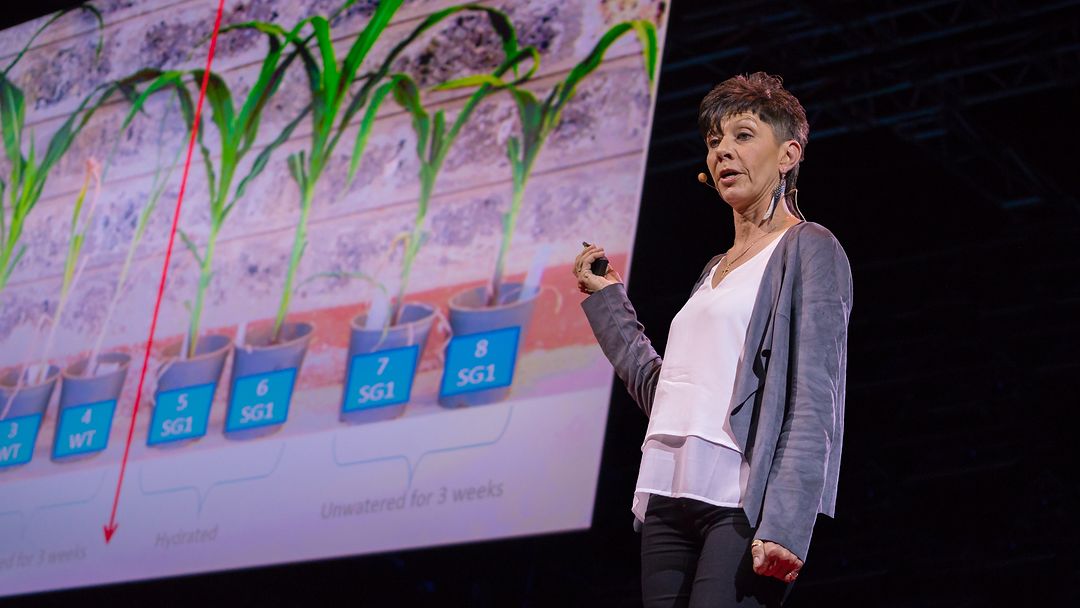
How we can make crops survive without water
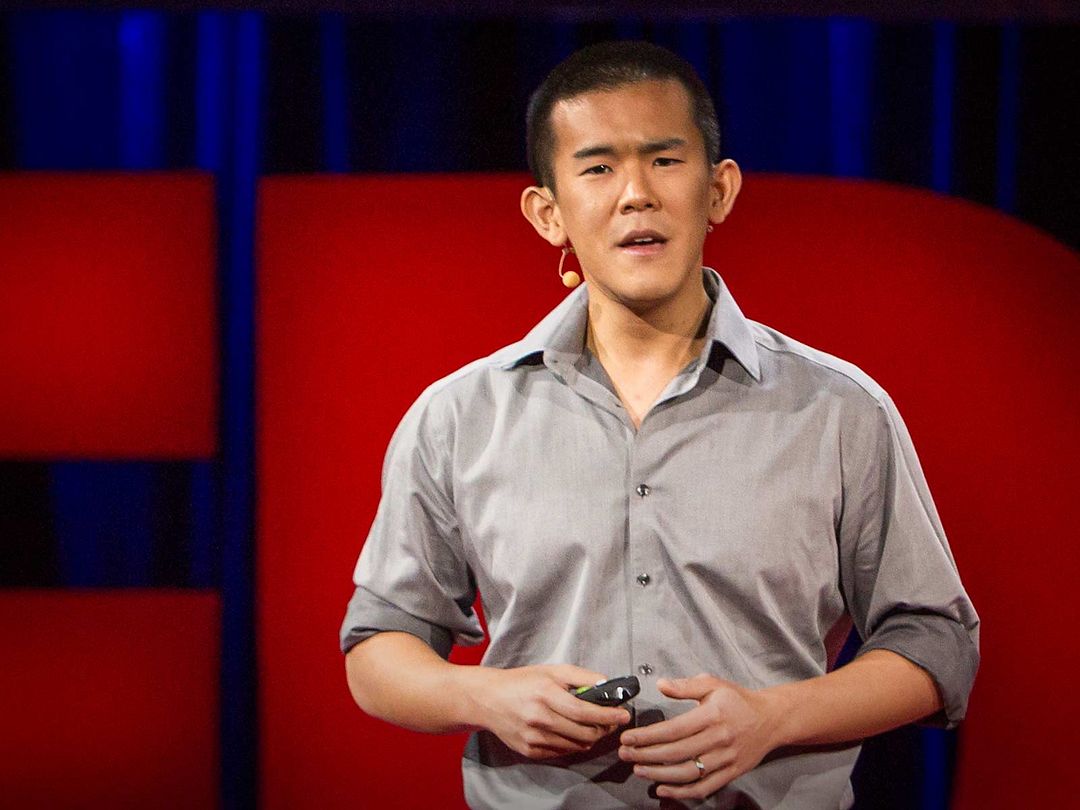
Zombie roaches and other parasite tales

How young blood might help reverse aging. Yes, really

What we didn't know about penis anatomy
We need your support today.
Independent journalism is more important than ever. Vox is here to explain this unprecedented election cycle and help you understand the larger stakes. We will break down where the candidates stand on major issues, from economic policy to immigration, foreign policy, criminal justice, and abortion. We’ll answer your biggest questions, and we’ll explain what matters — and why. This timely and essential task, however, is expensive to produce.
We rely on readers like you to fund our journalism. Will you support our work and become a Vox Member today?
11 epic mysteries scientists totally can’t solve
What is the universe made out of? When did the anus evolve? Can humans live to 150 years old? And more!
by Brian Resnick

To investigate some of the biggest mysteries in science, you have to venture to some pretty far-out places: the bottom of the oceans , inside the human brain , the tops of mountains , and even the end of time .
That’s what we’ve done on Unexplainable , a science podcast that Vox launched in March to explore the most important, interesting, and awe-inspiring unanswered questions in science. We set out to ask big questions that inspire scientists to do their work — questions that fill them with wonder or a sense of purpose, or remind them that the universe is still an enormous place with untapped potential.
In exploring these stories, we’ve learned some of the surprising reasons why major scientific mysteries can go unsolved for years or even decades: Some are due to the limits of technology, others are because of human failings. Regardless, working on Unexplainable has reminded us there’s hope in a question. Why ask one if you don’t believe an answer is possible?
Here, we rounded up 11 questions that astounded us the most.
For more mysteries, subscribe to Unexplainable wherever you listen to podcasts .
What is most of the universe made out of?
It’s a simple question that’s also bafflingly unanswered: What makes up the universe? It turns out all the stars in all the galaxies in all the universe barely even begin to account for all the stuff out there. Most of the matter in the universe is actually unseeable, untouchable, and, to this day, undiscovered. It’s called dark matter, and despite searching for it for decades, scientists still have no idea what it is.
Further reading: Dark Matter, unexplained
What lives in the ocean’s “twilight zone”?
As you dive deeper into the ocean, less and less sunlight shines through, and about 200 meters beneath the surface, you reach an area called the “twilight zone.” Sunlight fades almost completely out of view, and our knowledge about these dark depths fades too.
“It’s almost easier to define it by what we don’t know than what we do know,” Andone Lavery, an acoustician at the Woods Hole Oceanographic Institution, told Vox’s Byrd Pinkerton.
Yet this region of the ocean is extremely important. It’s possible — but not certain — that there are more fish living in the twilight zone than the rest of the ocean combined, and creatures of the dark ocean play a large role in regulating the climate.
Further reading: “It’s deep. It’s dark. It’s elusive.” The ocean’s twilight zone is full of wonders.
What killed Venus?
“Hellscape” is the most appropriate word to describe the surface of Venus, the second planet from the sun. At 900 degrees Fahrenheit, it’s the hottest planet in the solar system, thanks in part to an atmosphere of almost entirely carbon dioxide. Clouds of highly corrosive sulfuric acid are draped over a volcanic landscape of razor-sharp lava flows. Most crushingly, the pressure on the surface of Venus is about 92 times the pressure you’d feel at sea level on Earth.
Listen to Unexplainable
Unexplainable is a weekly science podcast about everything we don’t know. For stories about great scientific mysteries, follow us wherever you listen to podcasts .
Yet some scientists suspect Venus was once much like Earth, with a liquid water ocean like the ones that support life on our planet. This prompts an existential question for life on Earth. “It really is a question about why are we here,” says Robin George Andrews, volcanologist and author of Super Volcanoes: What They Reveal about Earth and the Worlds Beyond .
“Venus and Earth are planetary siblings,” Andrews says. “They were made at the same time and made of the same stuff, yet Venus is apocalyptic and awful in every possible way. Earth is a paradise. So why do we have a paradise next to a paradise lost?”
There are two leading hypotheses. One is that the sun cooked Venus to death. The other is that volcanoes did.
Further reading: Venus could have been a paradise but turned into a hellscape. Earthlings, pay attention.
What will animals look like in the future?
It’s impossible to completely predict how evolution will play out in the future, but that doesn’t mean we can’t try. Reporter Mandy Nguyen asked biologists and other experts to weigh in: What could animals look like a million years from now?
The experts took the question seriously. “I do think it’s a really useful and important exercise,” Liz Alter, professor of evolutionary biology at California State University Monterey Bay, told Nguyen. In thinking about the forces that will shape the future of life on Earth, we need to think about how humans are changing environments right now.
Further reading: The animals that may exist in a million years, imagined by biologists
What causes Alzheimer’s?
There is no cure for Alzheimer’s, a neurodegenerative disease that causes dementia, and no highly effective treatments, despite decades of research. Why? For one thing, scientists don’t have a complete understanding of what causes the disease.
For years, the prevailing theory has been that Alzheimer’s is caused by pile-ups of proteins called amyloids, which effectively create plaques in the brain. But drugs that help clear amyloids from the brain don’t seem to work very well in combating the disease.
Some scientists think Alzheimer’s researchers have been too focused on this one theory, at the expense of studying other potential causes, like viral infections.
Further reading: The new Alzheimer’s drug that could break Medicare
How is a brainless yellow goo known as “slime mold” so smart?
Slime mold is an extremely simple organism that is also extraordinarily complex.
Technically, they are single-celled organisms. But many individual slime mold cells can fuse themselves together into a huge mass, capable of, well ... thinking.
Slime mold can solve mazes and seems to be able to make risk-benefit decisions. There’s even evidence that slime mold can keep track of time . They do this all without a brain or even a single brain cell. Whatever mechanism allows slime mold to solve these problems, it’s evolved in a manner different from humans. How exactly do they do this? And what can it teach us about the nature of intelligence?
Further reading: Hampshire College promoted a brainless slime mold to its faculty. And it’s working on border policy.
What’s the oldest possible age a human can reach?
Is the first human to live to 150 years old alive today? We don’t know. On average, the human lifespan has risen over the decades in most of the world, but it’s unclear if there’s a ceiling. Could a human live into their second century? The technology and medicine that could make that possible may already be in development. But if it works, there will be unsettling questions for societies to answer.
Further reading: Science reporter Ferris Jabr’s piece “ How Long Can We Live? ” for the New York Times Magazine inspired this episode.
Are long-haul symptoms unique to Covid-19?
Millions of people around the world have dealt with long-term symptoms of Covid-19 for weeks or months after their initial infection has cleared. Some scientists say these “long-haul” symptoms are not unique to Covid. Instead, they argue that many types of viral infections can leave people with long-term symptoms, which often can go under-recognized in medicine. The question is: What connects all of these long-haul symptoms?
“It has always been [and] is the case that patients who get sick experience high levels of symptoms like those described by long-Covid patients,” Megan Hosey, assistant professor at the Johns Hopkins Department of Physical Medicine and Rehabilitation, told Vox’s Julia Belluz . “We have just done a terrible job of acknowledging [and] treating them.”
Further reading: The nagging symptoms long-haulers experience reveal a frustrating blind spot in medicine.
Why don’t doctors know more about endometriosis?
In people with endometriosis, tissue similar to what grows inside the uterus grows elsewhere in the body. It’s a chronic condition that can be debilitatingly painful. Yet doctors don’t fully understand what causes it, and treatment options are limited.
Worse, many people with endometriosis find that doctors can be dismissive of their concerns. It can take years to get an accurate diagnosis, and research into the condition has been poorly funded.
Vox reporter Byrd Pinkerton highlighted how frustrating it can be to suffer from an often-ignored, chronic condition. “It’s just so, so, so soul-crushing to just live in this body day in and day out,” one patient told Pinkerton.
Further reading: People with endometriosis experience terrible pain. There’s finally a new treatment.
Why do we have anuses — or butts, for that matter?
This is a question we never even knew we wanted to answer — until we heard the Atlantic’s Katherine Wu explain that “the appearance of the anus was momentous in animal evolution.” Before the appearance of the anus, animals had to eat and excrete through the same hole. The anus allowed for a more efficient system, and allowed animal life on Earth to grow bigger and take on new shapes and forms.
But scientists don’t have a complete picture of the evolutionary history here; they don’t know which creature developed the anus first, and when. “It’s so hard to study something that must be millions and millions of years old and doesn’t fossilize,” Wu says.
And then there’s a whole other question: Why is the human butt so big, compared with other mammals?
Further reading: Katherine Wu’s “ The Body’s Most Embarrassing Organ Is an Evolutionary Marvel ,” at the Atlantic.
What the heck is ball lightning?
For millennia, people have been telling stories about mysterious spheres of light that glow, crackle, and hover eerily during thunderstorms. They’ve been spotted in homes, in rural areas, in cities, on airplanes , and even passing through windows .
They seem out of this world, but scientists believe they are very much of this world. These apparitions are called ball lightning, and they remain one of the most mysterious weather phenomena on Earth.
Ball lightning usually only lasts for a few moments, and it’s impossible to predict where and when it’ll show up. You can’t hunt ball lightning and reliably find it. Ball lightning finds you.
It’s rare, but many people have seen it. Scientists don’t know exactly where it comes from, but that hasn’t stopped them from trying to make it themselves, in their labs.
Further reading: Ball lightning is real, and very rare. This is what it’s like to experience it.
And so many more...
Those are just 11 of the mysteries we’ve explored in Unexplainable . There are so many more ! They include questions like: Can we predict when tornadoes will form? Where does all the plastic go in the ocean? Why do some people think they can talk to the dead? What’s the deal with “Havana syndrome”? How will the universe end? How tall is Mount Everest? Why does the placebo effect work? Find all the episodes here .
If you have ideas for topics for future shows, send us an email at [email protected] .
- Unexplainable
Most Popular
- Sign up for Vox’s daily newsletter
- The case against otters: necrophiliac, serial-killing fur monsters of the sea
- The new followup to ChatGPT is scarily good at deception
- Biden and Harris say America’s no longer at war. Is that true?
- The twisted political logic behind Trump’s attacks on Haitian immigrant
Today, Explained
Understand the world with a daily explainer plus the most compelling stories of the day.
This is the title for the native ad
More in science.

The mission tested lots of new technology for future, longer missions.

Scientists are trapped in an endless loop of grant applications. How can we set them free?

561 research papers in, the case for degrowth is still weak.

Is anything really “cruelty-free”?

February?! Until February?!?! Boeing slip leaves astronauts in limbo.

The privately funded venture will test out new aerospace technology.
- Entertainment
- General Knowledge

10 Ways to Creatively Cook and Eat Highly Invasive Species

Top 10 Songs from Musicals That Are Misunderstood

10 Game of Thrones Characters Who Differed Greatly in the Books

10 Times Luck Won Battles

Ten Things That You Never Knew Were Created Entirely by Mistake

10 Animals with Dominant Females

10 Glimpses into Gay Life in History

Unsung Heroes: 10 Important Professions That Deserve Better Pay

Ten Billion Dollar Blunders: When Companies Set Cash on Fire

10 Shocking Facts about the Short Life of Percy Bysshe Shelley
Who's behind listverse.

Jamie Frater
Head Editor
Jamie founded Listverse due to an insatiable desire to share fascinating, obscure, and bizarre facts. He has been a guest speaker on numerous national radio and television stations and is a five time published author.
10 Ridiculous But Surprisingly Fascinating Scientific Research Studies
Fueled by unquenchable curiosity, some scientists embark on studies that appear to be ridiculous, obvious, or insignificant. These scientists often face criticism and mockery from inside and outside the scientific community. However, if you look closely, this seemingly wacky research is also meaningful and even provocative.
10 Fruit Bats Love Oral Sex
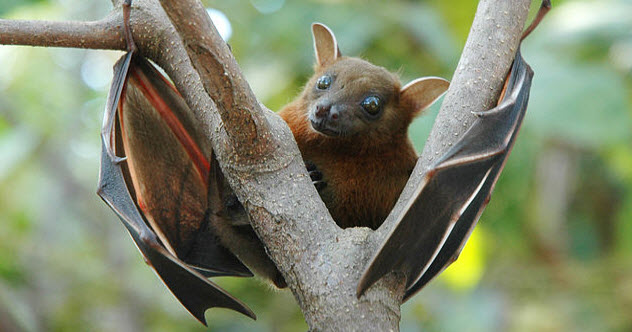
Animals have sex primarily for reproduction rather than pleasure. The male inserts his penis into the female’s vagina, and after a minute or two, the deed is done.
Sex among animals is so basic and boring that it’s fascinating to know that certain mammals engage in sexual activities that are associated with humans and pleasure , such as fellatio and cunnilingus.
In 2009, researchers from the Guangdong Entomological Institute in Guangzhou, China, accidentally discovered that short-nosed fruit bats engage in oral sex. During the study, the scientists expected to see typical animal behavior such as grooming. Instead, they observed that female fruit bats licked the male’s penis during sex.
In another study conducted in 2010 and 2011, researchers discovered that flying foxes (another fruit bat species) engage in oral sex, too. This time, it was the male bat that licked the female’s vagina. In both studies, researchers discovered that engaging in fellatio and cunnilingus prolonged sex among the bats.
Scientists have not yet discovered the evolutionary basis of oral sex among fruit bats. But they suggest that it might help in sperm transportation, stimulation of female glandular secretions, and prevention of sexually transmitted diseases.
9 Cows With Names Produce More Milk

Dairy farmers could potentially increase their incomes with one simple but weird trick —give their cows names. A scientific study published in Anthrozoos suggested that cows with names produce more milk than their nameless counterparts.
This bizarre study was conducted by Drs. Catherine Douglas and Peter Rowlinson of Newcastle University, and it involved over 500 dairy farmers from the United Kingdom.
On average, cows produce 7,500 liters (2,000 gal) of milk over a period of 10 months. But Douglas and Rowlinson discovered that cows with names produced 260 liters (70 gal) more.
Many dairy farmers have long suspected that giving their cattle some “one-to-one attention” increases milk production, but this research was the first that tried to prove it scientifically. According to the study, cows that are herded as a group also produce less milk.
8 Dogs Defecate In A North-South Stance

Several studies suggest that certain animal species—such as birds, foxes, and deer—possess magnetic sensitivity. Inspired by this research, a team of scientists from the Czech Republic decided to find out if dogs possess this amazing ability, too.
The researchers used defecation to determine whether our canine friends adjust their actions according to Earth’s magnetic field. The study involved 70 dogs from 37 breeds. The researchers held the experiment in an open field because dogs can be influenced by familiar surroundings. In total, the dogs defecated almost 1,900 times.
During the experiment, the scientists discovered that dogs prefer to poo “with their bodies aligned in a North-South stance .” They also found that dogs avoid defecating in an East-West alignment.
Interestingly, the dogs would only poo in a North-South stance if the magnetic field was calm. If it wasn’t, then the dogs would defecate in any direction that they preferred.
The scientists also discovered that dogs on leashes didn’t care whether their bodies were aligned with Earth’s magnetic field. Apparently, only canines that roam freely are likely to assume the North-South stance when defecating.
7 Viagra Helps Hamsters Recover Faster From Jet Lag
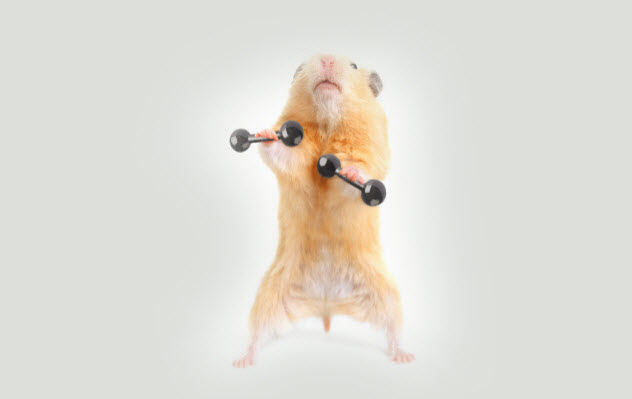
We all know that Viagra is used to treat erectile dysfunction. However, Diego Golombek of the National University of Quilmes in Buenos Aires, Argentina, has discovered that this light blue pill might also help to treat jet lag .
This bizarre scientific research was conducted on hamsters that were injected with Viagra. After administering the drug, the rodents’ sleep cycles were pushed ahead by six hours—the approximate amount of time needed to fly from New York to Paris.
The hamsters on Viagra recovered from jet lag as much as 50 percent faster than the hamsters without Viagra. Although the results were fairly positive, scientists do not know if the same effect will occur in humans.
Furthermore, Viagra was administered to the hamsters via injection. Scientists are uncertain if taking the drug as a pill will produce the same effect.
6 Night Owls Are More Likely To Become Psychopaths Than Early Birds

Who knew that staying up late at night could potentially make you a psychopath?
According to a study conducted by Dr. Peter Jonason of the University of Western Sydney, people who stay up late have a tendency to manifest antisocial personalities .
After assessing the sleeping patterns of 250 university students, Jonason discovered that night owls are more likely to become narcissistic, psychopathic, and manipulative than early birds.
Jonason believes that there is an “evolutionary basis for the link between antisocial [behavior] and a preference for being awake late at night.” If you look at nature, most predators—like scorpions and lions—are awake at night.
In human society, those who perpetrate crimes and engage in sexual promiscuity are often active during the twilight hours. However, Jonason admits that more research is needed to show a conclusive link between staying up late and the manifestation of antisocial tendencies.
5 Mice With Mismatched Heart Transplants Live Longer When Exposed To Classical Music
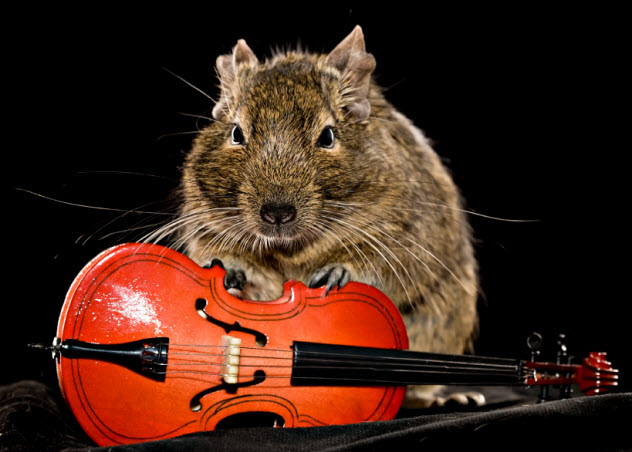
Several studies have confirmed that listening to classical music is associated with stress reduction, sleep improvement, and focus enhancement. However, scientific research conducted by Masateru Uchiyama of Juntendo University Hospital in Tokyo suggests that listening to classical music might benefit the heart as well.
Uchiyama’s research involved mice with mismatched heart transplants. The rodents were divided into four groups. One group listened to Verdi’s opera La Traviata . Another group listened to Mozart. The remaining two groups were exposed to Enya and “ a range of single monotones ,” respectively.
The results of this bizarre experiment were quite remarkable. The group that listened to Verdi’s opera survived for 26 days. The Mozart group lasted for 20 days. The groups of mice exposed to Enya and the single monotones survived 11 and seven days, respectively.
Uchiyama verified the results of his experiment by exposing deaf mice with mismatched heart transplants to Verdi’s opera. Compared to the rodents who had actually heard the song, the deaf mice only lasted seven days.
This result verified Uchiyama’s assumption that actually hearing the music—and not other factors like vibrations—lengthened the survival rate of mice.
4 Expensive Placebos Are More Effective Than Cheap Placebos

Although the placebo effect is not fully understood, several studies show that this seemingly miraculous phenomenon has the ability to alleviate depression, pain, and other health conditions.
To add to the mystery, scientists recently discovered that expensive placebos are more effective than cheap ones. This intriguing research was conducted on actual patients who were suffering from Parkinson’s disease. The results were published in the journal Neurology .
The researchers informed 12 patients that they were going to get “shots of two formulations of equal effectiveness of the same drug.” The only difference was the cost.
The first formulation cost $1,500, and the second one was $100. In reality, the injections were only saline and didn’t contain any active ingredients. After receiving the $1,500 placebo shots, the majority of patients experienced significant improvement in their motor function. However, when the $100 shots were administered, no notable changes resulted.
When the truth was revealed to the patients, eight admitted that “they expected the expensive drug to be more effective.” The remaining four subjects said that they “had no expectation of greater benefits.”
Interestingly, the patients who did not have any expectations about the expensive placebo were the ones who did not show any significant changes during the study.
3 Wasabi Is An Excellent Fire Alarm

Wasabi is a Japanese condiment that is usually eaten with sushi. Wasabi contains a chemical compound called isothiocyanate, which is the same substance that gives mustard its distinct flavor .
Outside Japan, it’s difficult to find real wasabi. Almost all of the wasabi served in US restaurants is simply a mixture of mustard, food coloring , and horseradish.
Researchers from Shiga University of Medical Science have discovered that this pungent herb can also save lives during catastrophes like fires. Professor Makoto Imai developed a wasabi fire alarm that “sprays out a synthesized wasabi smell” if it detects smoke.
The unconventional fire alarm was tested on 14 people, four of whom were deaf. The results were quite remarkable. All but one subject woke up within two minutes after smelling the pungent wasabi.
The one person who didn’t wake up had a blocked nose. The researchers tried using other plants like lavender and peppermint , but none were as effective as wasabi in waking up people.
2 Bacon Can Cure Nosebleeds

According to a study conducted by Ian Humphreys and his team, bacon can quickly and effectively treat a nosebleed by serving as a nasal tampon. For this bizarre method to work, one must plug the bleeding nostril with a piece of cured pork . The meat must be uncooked.
At Detroit Medical Center, Humphreys and his colleagues tested their bacon hypothesis on a girl who had Glanzmann thrombasthenia, a rare hereditary disease that causes prolonged bleeding. After sticking a piece of cured pork inside the girl’s bloody nose, the bleeding stopped immediately.
The results of this bizarre scientific research were published in the Annals of Otology, Rhinology, and Laryngology . The researchers acknowledged that doctors had used cured pork to treat nosebleeds in the past. However, the practice was discontinued.
Humphreys and his colleagues speculate that the high risk of acquiring parasitic and bacterial complications from stuffing one’s nose with cured pork caused the unconventional treatment to be abandoned.
1 Diamonds Can Be Created From Tequila

At first glance, you would think that diamonds and tequila don’t have anything in common. But a closer look would show you otherwise. Scientists from the National Autonomous University of Mexico discovered that tequila has a “ratio of hydrogen, oxygen, and carbon which lies within the diamond growth region.” This surprising discovery led researcher Javier Morales and his team to create synthetic diamonds from tequila .
During the research, the scientists attempted to create diamonds from acetone, methanol, and ethanol. When they diluted ethanol in water, they discovered that it formed high-quality diamond films. Interestingly, tequila has similar proportions of 60 percent water and 40 percent ethanol, which is the ideal compound for creating synthetic diamonds.
To test their theory, the scientists recreated their experiment with a cheap bottle of white tequila. At first, they were worried that the other components of the alcoholic drink would obstruct or contaminate the process. But they didn’t. Just like the experiment with ethanol and water, tequila produced “spherical-shaped diamonds of nanometric size.”
+ Cats Can Make Humans And Animals Go Crazy

For many of us, cats are more than pets. They’re members of our family. However, a scientific study from Charles University in Prague suggests that cats can alter human and animal behavior.
It’s not the cats per se that cause the problem. Instead, it’s the parasites known as Toxoplasma gondii that live inside their bodies and propagate through their feces.
A study conducted at Imperial College London showed that rats infected with T. gondii lost their fear of cat odor . The parasite also caused the rats to be attracted to the smell of cat urine.
The rodents were introduced to other animal odors like dogs and minks, but they were only attracted to feline urine. Researcher Joanne Webster coined the term “fatal feline attraction” to describe this bizarre phenomenon.
In humans, the effects of T. gondii range from weird to extremely weird. In the Charles University study, researchers discovered that men infected with T. gondii “were more introverted, suspicious, oblivious to other people’s opinions of them, and inclined to disregard rules.”
On other hand, women infected with the parasite “were more outgoing, trusting, image-conscious, and rule-abiding.” The researchers also found that infected people became less attentive and “had significantly delayed reaction times.”
But the most alarming and bizarre effect of T. gondii on humans is that it can potentially cause schizophrenia.
When not busy working with MeBook —an app that transforms your Facebook into an actual printed book—Paul Jongko spends his time writing interesting stuff and creating piano covers.
More Great Lists

Paul Jongko is a freelance writer who enjoys writing about history, science, mysteries, and society. When not writing, he spends his time managing MeBook.com and improving his piano, calisthenics, and capoeira skills.
Read More: Twitter MeBook

#1: Elephants on Acid

#2: The Obedience Experiment

#3: Demikhov’s Two-Headed Dogs

#4: The Initiation of Heterosexual Behavior in a Homosexual Male

#5: The Isolated Head of a Dog

#6: Human-Ape Hybrid

#7: The Stanford Prison Experiment

#8: Facial expressions while decapitating a rat


#9: The Vomit-Drinking Doctor

#10: Beneficial Brainwashing
Home — Blog — Topic Ideas — Discover 130 Fascinating Science Topics Perfect for College Students
Discover 130 Fascinating Science Topics Perfect for College Students

When it comes to engaging discussions, college students and science enthusiasts are always on the hunt for exciting and interesting science topics. Whether you're preparing for a game night, a class presentation, or simply looking to impress with your knowledge, having a repertoire of fascinating scientific themes can be invaluable. This blog post will guide you through 130 intriguing science topics, offering a treasure trove of ideas to spark curiosity and foster engaging conversations.
The Allure of Interesting Science Topics
What makes a science topic captivating.
A captivating science topic is more than just an interesting subject; it’s a doorway to exploring the unknown and challenging the status quo. These topics often:
- Illuminate New Discoveries : Offer insights into recent advancements or groundbreaking research.
- Engage Curiosity : Pose questions that provoke thought and encourage further inquiry.
- Connect to Real Life : Relate scientific principles to everyday experiences and practical applications.
Why Science Topics Matter in Game Nights
Incorporating science topics into game nights can elevate the experience:
- Stimulate Intellectual Engagement : Keeps participants mentally active and engaged.
- Encourage Learning : Provides an opportunity to learn in a fun, stress-free environment.
- Foster Collaboration : Promotes teamwork and collaborative problem-solving.
Science Research Topics to Explore
Finding the right science research topics can be a game-changer for students and enthusiasts alike. Cool science topics not only pique interest but also provide a solid foundation for in-depth exploration. Here are some categories and examples to consider:
Physical Science Topics
Physical science encompasses a range of fascinating subjects. From the laws of physics to the wonders of astronomy, these topics can captivate students and researchers alike. Exploring physical science topics can lead to a deeper understanding of the universe and our place in it.
Science Research Topics for High School Students
High school is a critical time for budding scientists. Engaging with science research topics for high school students can ignite a passion for discovery and innovation. These topics can range from environmental science to cutting-edge technology, offering students a glimpse into the world of scientific research.
Science Research Paper Topics
Writing a research paper requires choosing the right topic. Science research paper topics should be both interesting and manageable, allowing for a thorough investigation. Whether you're delving into biological sciences or exploring the intricacies of chemistry, selecting the right topic is crucial for a successful research paper.
Interesting Science Topics for Students
Students at all levels can benefit from exploring interesting science topics. These topics not only enhance their knowledge but also encourage critical thinking and creativity. From the mysteries of space to the complexities of the human body, there are countless fascinating subjects to explore.
Science Topics for High School
High school students often seek science topics that are both challenging and intriguing. Science topics for high school can include everything from renewable energy sources to the ethical implications of genetic engineering. These topics help students develop a deeper understanding of scientific principles and their applications in the real world.
130 Science Topics Perfect for College Students
- Climate Change: How Does Climate Change Affect Our Everyday Life.
- Artificial Intelligence: The Ethical Challenges.
- CRISPR Technology: The Potential Tool for Curing Huntington’s Disease.
- Dark Matter and Dark Energy: The mysterious components making up most of our universe.
- Quantum Computing: Beyond The Limits of Traditional Computers.
- Nanotechnology: The Industrial Revolution of The 21st Century.
- The Human Microbiome: The trillions of microbes living in and on our bodies and their impact on health.
- Stem Cell Research: Most Effective and Beneficial Biological Source.
- Exoplanets : The search for planets outside our solar system and the potential for extraterrestrial life.
- Black Holes: The Enigmatic Abyss of the Universe.
- The Human Genome Sequencing in Health and Mutation.
- Virtual Reality: Exploring The Pros and Cons.
- Antibiotic Resistance : The growing threat of bacteria that are resistant to antibiotics.
- The Big Bang Theory : The prevailing cosmological model explaining the existence of the observable universe.
- Biodiversity: The Special Connection Between All Organisms on Our Planet.
- Bioluminescence: Understanding and Preserving Bioluminescence in Puerto Rico and Florida.
- Biotechnology: The use of biological processes for industrial and other purposes.
- Cellular Biology: The study of cells, the basic units of life.
- Chemical Bonding: The interactions that hold atoms together in molecules.
- Cloning: The creation of genetically identical copies of an organism.
- Cognitive Science : The interdisciplinary study of the mind and its processes.
- Conservation Biology : The science of protecting and restoring biodiversity.
- Cosmology: The study of the origins and eventual fate of the universe.
- Cybersecurity : The protection of internet-connected systems from cyberattacks.
- DNA and RNA: The molecules that carry genetic instructions in organisms.
- Ecology: The study of the relationships between organisms and their environments.
- Evolution: The process by which different kinds of living organisms are thought to have developed.
- Forensic Science : The application of science to criminal and civil laws.
- Fusion Power: The process of generating energy by fusing atomic nuclei.
- Genetic Engineering: The manipulation of an organism's genes using biotechnology.
- Genetic Testing: The analysis of DNA to identify changes in chromosomes, genes, or proteins.
- Geology: The study of the solid Earth, the rocks of which it is composed, and the processes by which they change.
- Global Health: The health of populations in a global context, transcending the perspectives and concerns of individual nations.
- Gravitational Waves : Ripples in spacetime caused by the acceleration of massive objects.
- Green Energy: Sustainable energy that is generated from natural resources.
- Human Evolution: The process of evolution that led to the emergence of modern humans.
- Immunology: The study of the immune system, which defends the body against infectious diseases.
- Marine Biology: The study of marine organisms, their behavior, and their interactions with the environment.
- Microbiology: The study of microscopic organisms, including bacteria, viruses, and fungi.
- Neuroscience: The scientific study of the nervous system, including the brain and spinal cord.
- Nuclear Physics: The field of physics that studies atomic nuclei and their constituents and interactions.
- Nutritional Science: The study of the relationship between food and a healthy body.
- Organic Chemistry: The study of the structure, properties, composition, reactions, and preparation of carbon-containing compounds.
- Paleontology: The scientific study of life that existed prior to, and sometimes including, the start of the Holocene Epoch.
- Particle Physics: The study of the fundamental particles that make up matter and radiation.
- Pharmacology: The study of drugs and their interactions with living organisms.
- Photosynthesis: The process by which green plants and some other organisms use sunlight to synthesize foods.
- Physical Chemistry: The study of macroscopic, atomic, subatomic, and particulate phenomena in chemical systems.
- Physiology: The scientific study of the functions and mechanisms that work within a living system.
- Planetary Science: The scientific study of planets, moons, and planetary systems.
- Plate Tectonics: The scientific theory describing the large-scale motions of Earth's lithosphere.
- Psychology: The scientific study of the mind and behavior.
- Quantum Mechanics: The branch of physics dealing with the smallest particles in the universe.
- Robotics: The interdisciplinary branch of engineering and science dealing with robots.
- Solar Energy: The energy derived from the sun through the form of solar radiation.
- Space Exploration: The investigation of physical conditions in space and on stars, planets, and their moons.
- Species Extinction: The disappearance of species from Earth.
- Stem Cells: The cells that have the potential to develop into many different types of cells in the body.
- String Theory: The theoretical framework in which the point-like particles of particle physics are replaced by one-dimensional objects called strings.
- Superconductivity: The ability of certain materials to conduct electric current with zero resistance.
- Sustainable Agriculture: The practice of farming using principles of ecology, the study of relationships between organisms and their environment.
- Telemedicine: The remote diagnosis and treatment of patients using telecommunications technology.
- Tissue Engineering: The use of a combination of cells, engineering materials, and suitable biochemical and physicochemical factors to improve or replace biological functions.
- Vaccines: The substances used to stimulate the production of antibodies and provide immunity against one or several diseases.
- Volcanology: The study of volcanoes, lava, magma, and related geological, geophysical, and geochemical phenomena.
- Waste Management: The collection, transport, processing, recycling, or disposal of waste materials.
- Water Pollution: The contamination of water bodies, usually as a result of human activities.
- Weather and Climate: The day-to-day conditions of the atmosphere and the long-term averages of these conditions in a place.
- Wildlife Conservation: The practice of protecting wild plant and animal species and their habitats.
- Wind Energy: The energy derived from the wind through the use of wind turbines.
- Zoology: The branch of biology that studies the animal kingdom, including the structure, embryology, evolution, classification, habits, and distribution of all animals.
- Astrobiology: The study of the origin, evolution, distribution, and future of life in the universe.
- Bioinformatics: The application of computer science and information technology to the field of biology and medicine.
- Biophysics: The study of biological systems using the methods and theories of physics.
- Cell Signaling: The complex communication systems that govern basic cellular activities and coordinate cell actions.
- Circadian Rhythm: The internal process that regulates the sleep-wake cycle and repeats roughly every 24 hours.
- Cryogenics: The production and behavior of materials at very low temperatures.
- Epigenetics: The study of changes in organisms caused by modification of gene expression rather than alteration of the genetic code itself.
- Food Science: The discipline that involves the study of physical, microbiological, and chemical makeup of food.
- Genomics: The study of the genomes of organisms, aiming to decipher the entire DNA sequence and understand its function.
- Hydrology: The study of the movement, distribution, and quality of water on Earth and other planets.
- Materials Science: The study of the properties and characteristics of materials, including metals, ceramics, polymers, and composites.
- Medical Imaging: The techniques and processes used to create images of the human body for clinical purposes.
- Molecular Biology: The study of the molecular underpinnings of the processes of replication, transcription, and translation of the genetic material.
- Neuroplasticity: The ability of the brain to form and reorganize synaptic connections in response to learning or experience.
- Optogenetics: The use of light to control cells in living tissue, typically neurons, that have been genetically modified to express light-sensitive ion channels.
- Parasitology: The study of parasites, their hosts, and the relationship between them.
- Pharmacogenomics: The study of how genes affect a person's response to drugs.
- Photonics: The physical science of light (photon) generation, detection, and manipulation through emission, transmission, modulation, signal processing, switching,
- amplification, and sensing.
- Plant Pathology: The scientific study of diseases in plants caused by pathogens and environmental conditions.
- Quantum Computing Algorithms: The study of algorithms that run on a realistic model of quantum computation.
- Radiology: The medical discipline that uses medical imaging to diagnose and treat diseases.
- Regenerative Medicine: The branch of medicine that develops methods to regrow, repair, or replace damaged or diseased cells, organs, and tissues.
- Renewable Energy: Energy from sources that are naturally replenishing but flow-limited.
- Systems Biology: The study of the interactions between the components of biological systems and how these interactions give rise to the function and behavior of that system.
- Synthetic Biology: The design and construction of new biological parts, devices, and systems and the re-design of existing, natural biological systems for useful purposes.
- Toxicology: The study of the adverse effects of chemical, physical, or biological agents on living organisms and the ecosystem.
- Virology: The study of viruses and virus-like agents, including their structure, classification, and replication, and their effects on host organisms.
- X-ray Crystallography: The experimental science determining the atomic and molecular structure of a crystal, in which the crystalline atom scattering factors and phases are
- determined by X-ray diffraction.
- Zoonoses: Infectious diseases that are transmitted between animals and humans.
- Astronomy: The study of celestial objects, space, and the physical universe as a whole.
- Behavioral Genetics: The study of the genetic and environmental influences on human and animal behavior.
- Biochemistry: The study of the chemical processes within and relating to living organisms.
- Carbon Capture: The process of capturing waste carbon dioxide from large point sources, such as fossil fuel power plants.
- Cellular Immunology: The study of the immune system at the cellular level.
- Chemical Kinetics: The study of rates of chemical processes.
- Chronobiology: The study of biological rhythms in living organisms.
- Computational Chemistry: The use of computer simulation to assist in solving chemical problems.
- Conservation Ecology: The study of the distribution and abundance of organisms and how these are affected by the environment.
- Developmental Biology: The study of the process by which organisms grow and develop.
- Electromagnetism: The study of the electromagnetic force, a type of physical interaction that occurs between electrically charged particles.
- Environmental Chemistry: The study of the chemical and biochemical phenomena that occur in natural places.
- Environmental Toxicology: The study of the effects of man-made and natural chemicals on the environment.
- Epidemiology: The study of how often diseases occur in different groups of people and why.
- Evolutionary Biology: The study of the evolutionary processes that have given rise to biodiversity.
- Forensic Anthropology: The application of the science of physical anthropology to the legal process.
- Fractal Geometry: The study of mathematical sets that exhibit a repeating pattern at every scale.
- Genetic Counseling: The process of helping people understand and adapt to the medical, psychological, and familial implications of genetic contributions to disease.
- Geochemistry: The study of the chemical composition of the Earth and other planets.
- Geomorphology: The study of landforms and the processes that shape them.
- Glaciology: The study of glaciers, or more generally ice and natural phenomena that involve ice.
- High-Energy Physics: The branch of physics that studies the nature of the particles that constitute matter and radiation.
- Hydroponics: The method of growing plants without soil, using mineral nutrient solutions in a water solvent.
- Immunotherapy: The treatment of disease by inducing, enhancing, or suppressing an immune response.
- Marine Ecology : The study of how marine organisms interact with each other and the environment.
- Microbial Genetics: The study of the genetics of microorganisms, particularly bacteria.
- Molecular Modeling: The use of computers to model or mimic the behavior of molecules.
- Nanoscience : The study of phenomena and manipulation of materials at atomic, molecular, and macromolecular scales.
Science is a vast and endlessly fascinating realm, offering an abundance of interesting science topics to explore and discuss. Whether you’re a college student looking for inspiration or a science enthusiast eager to delve into new areas, these 130 science topics to research provide a solid foundation for engaging conversations and intellectual exploration.
One of the first steps in diving into the world of science is identifying the most interesting science topics for students. These topics can range from the mysteries of quantum physics to the intricacies of human biology. When selecting science research topics, it’s essential to choose those that not only pique your interest but also challenge your understanding and stimulate your curiosity.
For high school students, finding the right science topics for high school projects can be particularly rewarding. High school is a time when students can explore various subjects and discover their passions. Cool science topics, such as the study of renewable energy sources, the impact of climate change on ecosystems, or the development of new medical technologies, can captivate young minds and inspire future scientific endeavors.
Science research topics for high school students should be both challenging and accessible. These topics should encourage students to think critically and develop their research skills. Some potential science research paper topics for high school students include the effects of plastic pollution on marine life, the role of genetics in disease prevention, and the advancements in artificial intelligence and machine learning.
Physical science topics, such as the study of matter, energy, and the fundamental forces of nature, offer a wealth of opportunities for exploration. These topics can provide a deeper understanding of the natural world and lay the groundwork for more advanced studies in physics, chemistry, and engineering. Interesting science topics in the physical sciences can include the behavior of subatomic particles, the exploration of outer space, and the development of sustainable energy solutions.

We use cookies to personalyze your web-site experience. By continuing we’ll assume you board with our cookie policy .
Weird Science
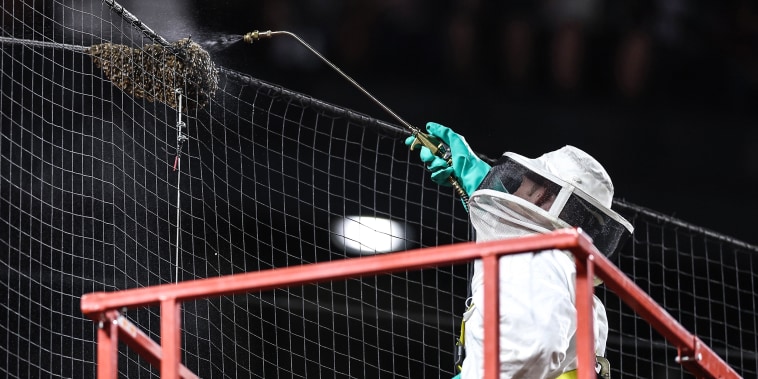
Beekeeper who saved Dodgers-Diamondbacks game from swarm gets to throw out first pitch
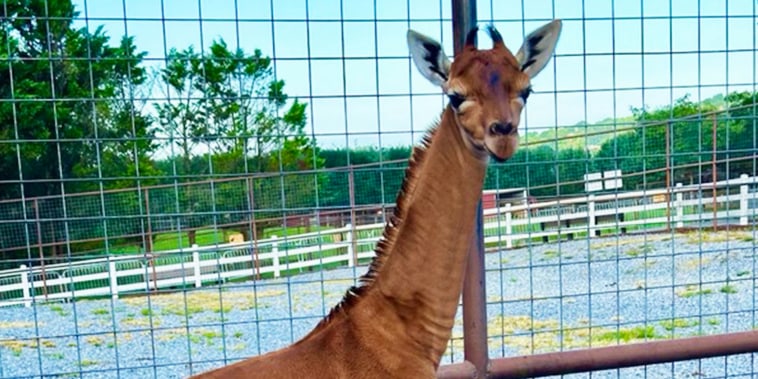
Rare spotless giraffe born at Tennessee zoo

War in Ukraine
Aliens falling satellite unexplained flash puzzles kyiv accustomed to russian missiles.
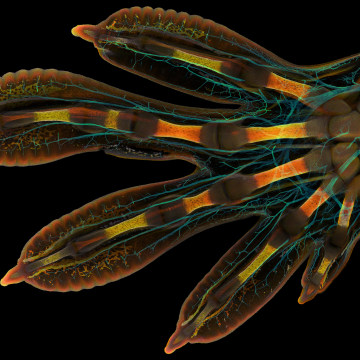
Nikon photo contest reveals fantastic microscopic world that surrounds us

Fortunetelling linked to financial risk-taking in men — even those who profess not to believe in it
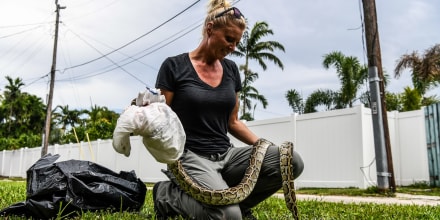
Pythons are eating alligators and everything else in Florida. Snake hunters stand poised to help.

Dogs can 'see' with their noses, study suggests
Weird science videos.

Petition launched calling for the pharaonic bust of Queen Nefertiti to return to Egypt

Village in Greece emerges from a lake decades after it was flooded
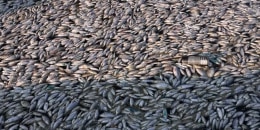
Watch: Dead fish plague Greek tourist resort after last year's floods

Watch: Sinkhole swallows huge part of soccer field in Illinois

2,000-year-old kids' sketches in Pompeii show gladiators, scientists say

Watch: 'Manhattanhenge' lights up New York City
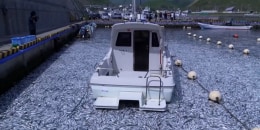
Holy mackerel: Japanese harbor overwhelmed by sardines
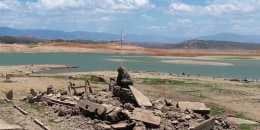
Drone video shows ruins of a centuries-old town revealed by a dried dam

China launches its Chang'e-6 mission to the far side of the moon

Video shows Athens landmarks shrouded in orange dust
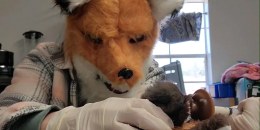
WATCH: Orphan fox gets fed by welfare worker wearing fox mask
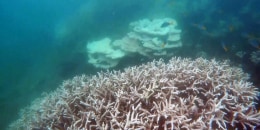
Australia's Great Barrier Reef has been hit by a major coral bleaching event
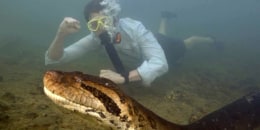
Scientists discover the world's largest snake species
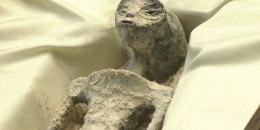
Mexican lawmakers hear testimony on possible existence of extraterrestrials

Video shows Ancient Roman-era swords discovered in Dead Sea cave

WATCH: Stunning blue supermoon dazzles stargazers around the world

Surgeon extracts live worm from patient's brain

Slaves' bedroom discovered in Ancient Roman villa at Pompeii
-nwg75x.jpg)
Watch: Russia launches lunar probe in search for water on the moon
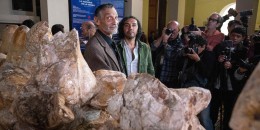
'World's heaviest animal' fossil goes on display in Peru
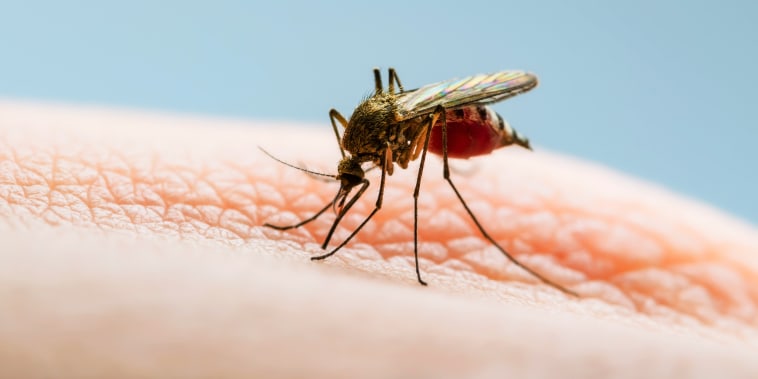
Mosquitoes sniff out hosts infected with certain viruses, researchers find

Your furry friend's 'puppy dog eyes' are a manipulation tactic, study suggests

Stonehenge may have been an ancient solar calendar, a new study discovers

'Rocked': NASA scientists brave bumpy flights into winter storms

French physicists developed a bubble that didn't burst for more than a year
Small world: see a louse leg and a rat embryo up close, culture matters, 'i can't imagine they're nice': sci-fi creators weigh in on aliens, pending ufo report.

Obama on UFO videos: 'We don't know exactly what they are'
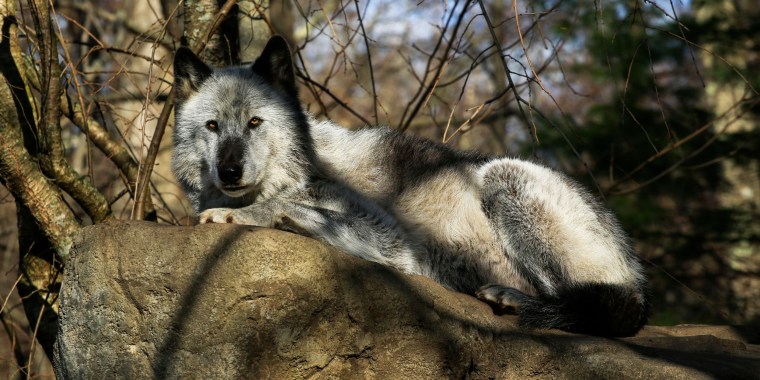
How to stop deer from colliding with cars? Bring in wolves

Handwritten Einstein letter with famous E = mc2 equation auctioned for $1.2M

Martian rover Zhurong takes first drive on surface of Red Planet, China says
Genetically modified mosquitoes to be released in florida, 'that's a lot of jaws': scientists think they know how many t. rex ever roamed the earth.
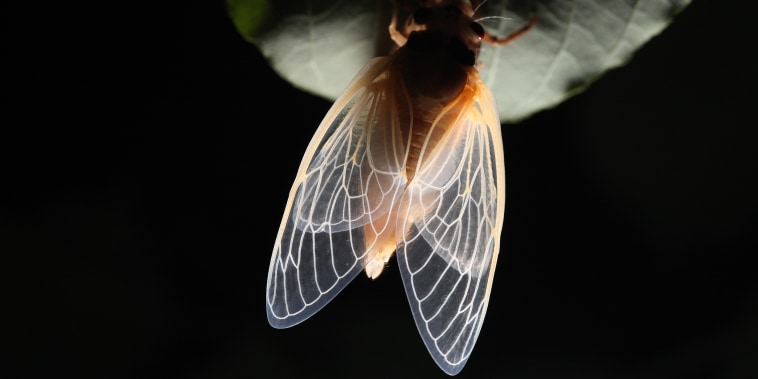
Science News
They've been underground for 17 years. now billions of cicadas are ready to party..
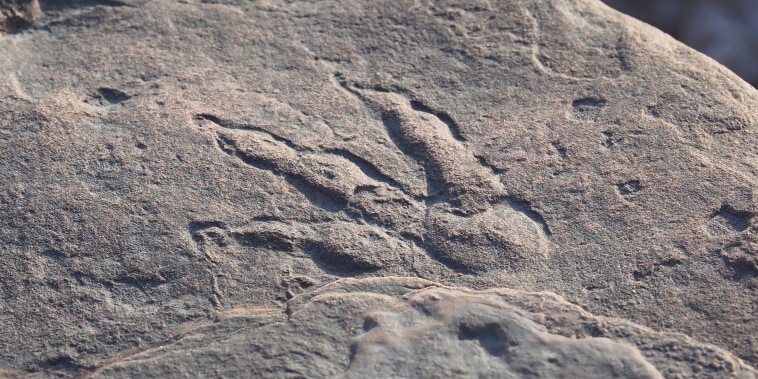
Four-year-old girl discovers 220 million-year-old dinosaur footprint at a beach in Wales

Earthlings treated to once-in-800-year celestial sight as Jupiter and Saturn align

Aliens exist and Trump almost let it slip, says Israeli professor and former space official
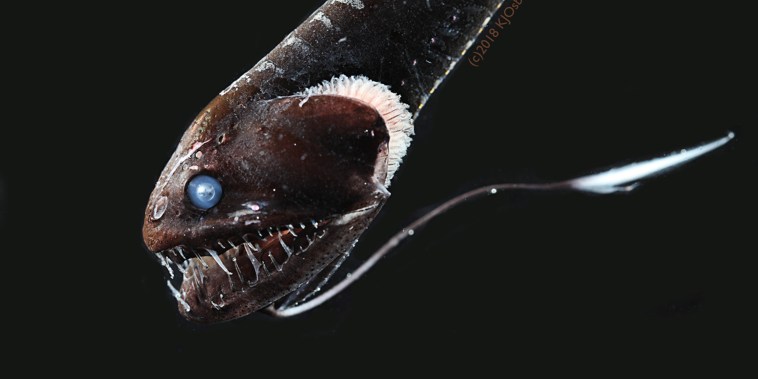
'Ultra-black' skin has kept some deep-sea species swimming along unnoticed
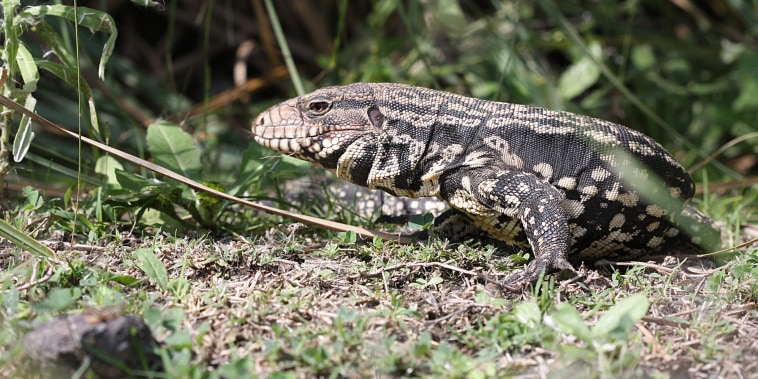
Invasive South American lizard sighted in Georgia for 3rd year, conservation group says
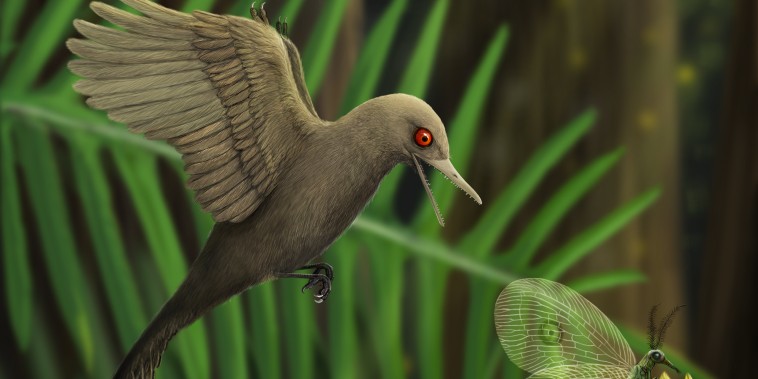
It's a bird, it's a dinosaur, it's ... really tiny: New species baffles dinosaur experts

Spooky 'blood snow' invades Antarctic island
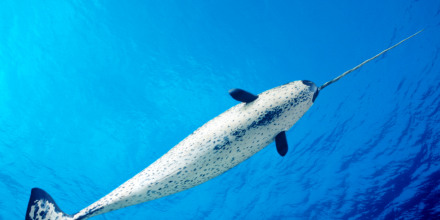
A museum's narwhal tusk disappeared more than 40 years ago. The FBI wants your help to find it.
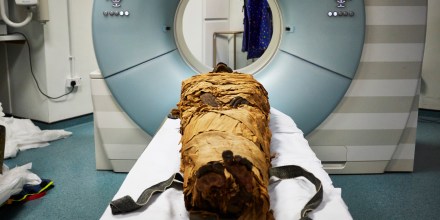
Ancient voice: Scientists recreate sound of Egyptian mummy
With a single bead of plastic, scientists tease interactive 3d.

Search for 'missing matter' predicted by Einstein's theory closes in
14 most bizarre scientific discoveries of 2018.
Whoa, that's weird science.

There's no question that science is full of explanations that defy our commonsense expectations. And every year, researchers find ever more mystifying discoveries about the universe we live in. From disgusting medical anomalies to blueberry planets to giant tadpoles, here are the 14 most bizarre findings of 2018.
Karate-kicking cockroaches avoid zombification
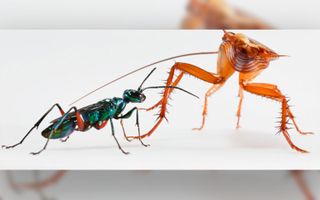
Parasitic wasps are among the most diverse of all animals, with nearly one species for every other known insect, according to research published this year in BMC Ecology . One particular fiend, known as the emerald jewel wasp, preys on cockroaches. After delivering a paralyzing sting to the victim's legs, the wasp then stings its brain and floods it with neurotoxins that hijack the cockroach's nervous system, turning the lowly crawler in a mind-controlled zombie. The cockroaches were once thought to have no defense against this gruesome attack, but new research shows that the prey can knock away their parasitic predator with a karate kick to the head that sends the wasps searching for an easier target.
A long-standing lump in the throat
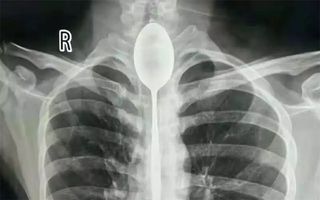
Some people are born with a silver spoon in their mouth. Others swallow them on a dare. That was the case for a patient known only as "Mr. Zhang" who arrived at Xinjiang Meikuang General Hospital in China in October. The spoon — which was actually made of steel — had become lodged in the man's esophagus a year earlier and was apparently not causing him much suffering until he began having pains after being punched in the chest. (Mr. Zhang sounds like he lives an interesting life.) Three doctors removed the 8-inch (20 centimeters) object during a procedure that lasted 2 hours. "I was very surprised," Dr. Xiwu, the hospital's director of ear, nose and throat ailments, said in a statement. "I have never encountered a similar patient."
The hexagon, the dodecahedron, the...scutoid?

Triangles and squares are so passé. Geometry enthusiasts will be thrilled to learn that there's a new shape around, the scutoid . Looking like a strange, 3D crystal, the scutoid was named after a roughly triangle-shaped part of a beetle's thorax. The newly discovered form has actually been around in nature for a long time. Epithelial cells found on the surface of animals' bodies, are often packed together into scutoid-al shapes, which minimizes their energy usage and maximizes their stability.
What if Earth became blueberries?
It's not a question most people think about, but one computational neuroscientist wondered what would happen if the entire Earth were suddenly transformed into a bunch of blueberries . Anders Sandberg, who works at the University of Oxford's Future of Humanity Institute, wrote about this fanciful idea in a paper published to the preprint server arXiv (whose articles have not yet passed through peer review) in July . The first thing that would apparently happen is a drastic reduction in the force of gravity, since blueberries are less dense than the rocky substrate of our planet. The crushing force of the outer-edge blueberries would then compress and heat up the inner ones into a thick jam that would generate rollicking earthquakes. At blueberry Earth's center would be a hot core of blueberry "granita" ice, smushed into a solid by the extreme pressure. It can only be assumed that any intelligent beings evolving on such a planet would likely invent the pancake before the wheel.
A tadpole as long as your face
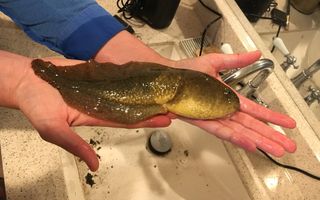
At first, they thought it was a fish. But once volunteers aiming to remove invasive bullfrogs ( Lithobates catesbeianus ) from Arizona looked closer, they realized they'd come across a monstrous pollywog. In a blog post, herpetologist Earyn McGee described the discovery, naming it Goliath, and speculating that the tadpole, which is much larger than the average bullfrog young, was suffering some kind of hormonal imbalance, as Live Science previously reported . Goliath is larger than a soda can, nearly as long as a banana, and definitely big enough to rest comfortably across a human face. Oh, yes, he's still alive and growing.
Dog licks man, man requires amputation

Dog owners tell themselves their pets would never do anything to intentionally harm them. Unfortunately, a Wisconsin man named Greg Manteufel learned the hard way that he probably shouldn't have let his best friend lick him too much . After being admitted to a hospital, Manteufel was found to be suffering from an infection by a bacteria called Capnocytophaga , which led to the amputation of his legs and parts of his arms. The bacteria live in most household pets without causing problems, but if they get passed to a human via a bite or scratch and spread through a person's bloodstream, they can cause deadly consequences. Dr. Silvia Munoz-Price, an infectious-disease specialist told Live Science that the case is extremely rare. "More than 99 percent of the people that have dogs will never have this issue. It's just chance," she said.
Ancient Chinese tomb contains extinct gibbon bones

In 2004, archaeologists excavated the tomb of Lady Xia, grandmother to the Chinese emperor Qin Shi Huang, who lived between 259 B.C. and 210 B.C. The burial site contained a number of objects and animal bones, which may have been the royal woman's pets. One of these skeletons turned out not to match that of any known species and, in July, researchers announced that they had discovered a previously unidentified gibbon that went extinct sometime since the last ice age, naming it Junzi imperialis . When it was alive, the ape probably weighed about 13 lbs. (6 kilograms) and ate a mix of fruits and leaves, as well as the occasional insect or bird's egg, Helen Chatterjee, a professor of biology at University College London, told Live Science
Eye lump is actually skin-crawling worm

Even horror movies aren't this gross. When a Russian woman found a small lump below her left eye, she didn't think it was particularly concerning. But after the l ump began to move above her eye and then into her lip, she sought medical attention. Doctors removed a thread-like worm known as Dirofilaria repens , which naturally infects dogs, cats, foxes and other wild mammals . The worms spread through mosquito bites and typically live in the tissue under the skin. Humans, it turns out, are just accidental hosts that the worm had no intention of defiling. Small comfort to those who will now suffer nightmares about this incident.
Uranus smells like rotten eggs

The jokes practically wrote themselves in April after astronomers announced that Uranus' atmosphere was chock-full of hydrogen sulfide , a stinky gas that comes out of sewers on Earth. Researchers have long debated the seventh planet's atmospheric composition and new data from the Gemini North telescope, which sits on Mauna Kea in Hawaii, identified telltale signatures of the smelly substance in light from the planet. "If an unfortunate human were to ever descend through Uranus' clouds, they would be met with very unpleasant and odiferous conditions," study co-author Patrick Irwin, a professor of planetary physics at the University of Oxford, said in a statement at the time . He then added that "suffocation and exposure in the negative 200 degrees Celsius [minus 328 degrees Fahrenheit] atmosphere made of mostly hydrogen, helium and methane would take its toll long before the smell."
Orange snow falls over Eastern Europe

Those dreaming of something other than a white Christmas might want to check out the Russian city of Sochi. Back in May, visitors began posting photos to Instagram of otherworldly orange snow on the mountains . Meteorologists attributed the phenomenon to sand and dust that had been kicked up by storms in Africa. The deep-tinged snow also fell over parts of Bulgaria, Ukraine , Romania, Moldova and Greece. The Athens Observatory was quoted by CNN as saying that it was "one of the largest transfers of desert sand to Greece from the Sahara ever."
Current page: Page 1
Sign up for the Live Science daily newsletter now
Get the world’s most fascinating discoveries delivered straight to your inbox.
Adam Mann is a freelance journalist with over a decade of experience, specializing in astronomy and physics stories. He has a bachelor's degree in astrophysics from UC Berkeley. His work has appeared in the New Yorker, New York Times, National Geographic, Wall Street Journal, Wired, Nature, Science, and many other places. He lives in Oakland, California, where he enjoys riding his bike.
Sahara desert hit by extraordinary rainfall event that could mess with this year's hurricane season
'Mountain of God' volcano in Tanzania is bulging, study finds
Mindfulness meditation really does relieve pain, brain scans reveal
- 2 Saline nose drops may shorten colds and cut transmission, trial hints
- 3 Sahara desert hit by extraordinary rainfall event that could mess with this year's hurricane season
- 4 'Mountain of God' volcano in Tanzania is bulging, study finds
- 5 Celestron Origin Intelligent Home Observatory review
Astronomy Research Topics: 200 Best Choices

According to NASA, our universe is approximately 13.8 billion years old, an astounding number that represents just one of the many discoveries astronomy research has revealed. As scientists continue to explore the mysteries of space, they look into a wide range of topics, from the behavior of black holes to the search for exoplanets that may harbor life.
This article will guide you through some of the most compelling astronomy research paper topics, offering insight into key areas like planetary science, stellar evolution, and cosmology, and providing a foundation for further study.
10 Subject Lists for Astronomy Research Paper Topics
Below, you'll find 10 subject lists highlighting some of the best areas to explore in this field. These topics aren't just interesting — they offer plenty of room for deep, meaningful research. Take a look through these categories, and you're bound to find something that grabs your attention and keeps you curious.
Meanwhile, you can also check out a separate article on interesting science topics .
Reach for the Stars with a Top-Notch Paper!
Get a research paper that's as expansive as the universe. Let us handle the details while you explore the stars.
Planetary Science and Exploration
- How do the atmospheres of Venus and Mars compare?
- The role of water ice in the formation of planetary moons.
- How do planetary rings form and evolve over time?
- What can we learn about Earth's history from studying impact craters on the Moon?
- The impact of solar wind on the atmospheres of gas giants.
- How does the geology of Mars compare to that of Earth?
- The potential for human colonization of the Moon: Challenges and possibilities.
- How do planetary magnetic fields protect against solar radiation?
- The search for signs of past life on Mars: What have we discovered so far?
- How does the composition of exoplanets affect their habitability?
- The role of space missions in understanding Jupiter's moon Europa.
- What can we learn about planetary formation from studying asteroid belts?
- How do seasonal changes on Titan compare to those on Earth?
- The effects of gravitational interactions on the orbits of exoplanets.
- How have recent discoveries changed our understanding of the Kuiper Belt?
- The influence of giant impacts on planetary crust formation.
- How do different types of planets (rocky vs. gas giants) affect their potential for hosting life?
- The future of interstellar exploration: What are the next steps?
- How do volcanic activities on Io contribute to our knowledge of planetary geology?
- The role of international cooperation in advancing planetary exploration missions.
Stellar Formation and Evolution
- How do protostars develop into main-sequence stars?
- The role of molecular clouds in stellar formation.
- How do magnetic fields influence the evolution of young stars?
- What factors determine the mass of a star and its eventual fate?
- The differences between low-mass and high-mass star evolution.
- How do binary star systems affect the evolution of individual stars?
- The impact of stellar winds on the surrounding interstellar medium.
- How do supernovae contribute to the formation of new stars?
- The life cycle of massive stars: From formation to black hole.
- How do star clusters evolve and influence their surroundings?
- The role of accretion disks in the formation of young stars.
- How do we observe and study the earliest stages of stellar evolution?
- The process of stellar nucleosynthesis and its impact on cosmic chemistry.
- How do variable stars provide insights into stellar evolution?
- The effects of stellar rotation on the life cycle of a star.
- How do different stellar populations (e.g., Population I, II, III) affect our understanding of galactic evolution?
- The relationship between stellar evolution and the formation of planetary nebulae.
- How do observational techniques for studying stellar formation compare to theoretical models?
- The role of massive stars in the chemical enrichment of the galaxy.
- How does the end stage of a star's life cycle influence its surrounding environment?
If you've already got your topic picked, hire research paper writer who will handle the nitty-gritty.
Exoplanets and the Search for Life
- How do scientists detect exoplanets in distant star systems?
- The role of the habitable zone in determining exoplanetary habitability.
- How do atmospheric compositions of exoplanets compare to Earth's?
- What are the challenges in studying exoplanet atmospheres?
- How do gravitational interactions affect the habitability of exoplanets?
- The potential for liquid water on exoplanets: What have we discovered?
- How do transit observations help us learn about exoplanet properties?
- The significance of discovering Earth-like exoplanets in nearby star systems.
- How might future missions improve our ability to find habitable exoplanets?
- The role of spectroscopy in analyzing exoplanet atmospheres.
- How do exoplanets with extreme conditions challenge our understanding of habitability?
- The impact of tidal forces on the habitability of exoplanets.
- How do binary star systems affect the potential for exoplanetary life?
- What can we learn about exoplanets from their host stars?
- The search for biosignatures on exoplanets: Methods and challenges.
- How do exoplanets orbiting red dwarf stars compare to those orbiting Sun-like stars?
- The potential for life on moons of gas giants and ice giants in other star systems.
- How does the discovery of exoplanets inform our understanding of planetary formation?
- The implications of finding exoplanets with unusual orbits or compositions.
- How do advancements in technology enhance our search for extraterrestrial life?
Cosmology and the Origins of the Universe
- How does the Big Bang theory explain the current structure of the universe?
- What evidence supports the theory of cosmic inflation?
- How do observations of the cosmic microwave background enhance our understanding of the early universe?
- The role of dark matter in the formation of large-scale cosmic structures.
- How do supernovae contribute to our knowledge of the universe's expansion?
- The relationship between dark energy and the accelerated expansion of the universe.
- How do galaxy clusters help us understand the large-scale structure of the universe?
- The impact of gravitational waves on our understanding of cosmology.
- How do recent discoveries challenge or support the standard cosmological model?
- The role of quantum fluctuations in the early universe.
- How does the distribution of galaxies inform theories about the universe's evolution?
- The implications of the multiverse theory on our understanding of cosmology.
- How does the study of primordial black holes contribute to our knowledge of the universe's origins?
- The significance of neutron star mergers in cosmological research.
- How do cosmic voids affect the distribution of matter in the universe?
- The relationship between the observable universe and the entire universe.
- How do theoretical models of the universe's fate compare to observational data?
- The role of large-scale simulations in understanding cosmic evolution.
- How does the study of cosmic microwave background polarization enhance our knowledge of the universe's early stages?
- The potential impact of new physics on our understanding of the universe's origin and development.
Black Holes and Neutron Stars
- How do black holes form from massive stars?
- The role of accretion disks in the growth of black holes.
- How do we detect and study black holes in binary systems?
- The impact of black hole mergers on gravitational waves.
- How do black holes influence the evolution of galaxies?
- The differences between stellar-mass black holes and supermassive black holes.
- How do neutron stars form, and what are their key characteristics?
- The role of pulsars in studying neutron stars and their magnetic fields.
- How do the equations of state affect neutron star properties?
- The relationship between black holes and gamma-ray bursts.
- How do black holes and neutron stars contribute to our understanding of general relativity?
- The effects of strong gravity near a black hole on time and space.
- How do neutron stars create heavy elements through supernova explosions?
- The potential for detecting gravitational waves from neutron star mergers.
- How do black holes in the early universe differ from those observed today?
- The role of black holes in the formation of relativistic jets.
- How do observations of neutron stars test theories of quantum gravity?
- The influence of black holes on the surrounding interstellar medium.
- How do magnetic fields affect the behavior of neutron stars?
- The future of studying black holes and neutron stars with upcoming space missions.
Astronomy Research Topics on Dark Energy
- What is dark matter, and how does it differ from ordinary matter?
- How do scientists detect and study dark matter if it does not emit light?
- The role of dark energy in the accelerating expansion of the universe.
- How does dark energy affect the large-scale structure of the cosmos?
- What are the leading theories explaining the nature of dark matter?
- How do observations of galaxy rotation curves provide evidence for dark matter?
- The impact of dark energy on the formation and evolution of cosmic structures.
- How might dark matter influence the formation of galaxy clusters?
- The relationship between dark matter and the cosmic microwave background radiation.
- How do current and future experiments aim to detect dark matter particles?
- The effects of dark energy on the fate of the universe: Will it continue to accelerate forever?
- How do gravitational lensing studies provide insights into dark matter distribution?
- The role of dark matter in the early universe and its impact on cosmic inflation.
- How might modifications to general relativity help explain dark energy?
- The search for dark matter in particle accelerators and underground laboratories.
- How do observations of distant supernovae help measure the effects of dark energy?
- The connection between dark matter and galaxy formation theories.
- How does the concept of dark energy fit into current cosmological models?
- The potential for new physics beyond the Standard Model to explain dark matter.
- How do different dark matter detection methods compare in terms of effectiveness?
Astrobiology and the Possibility of Extraterrestrial Life
- What are the key conditions required for life to exist on other planets?
- How do extremophiles on Earth help us understand potential life on other worlds?
- The role of water in the search for extraterrestrial life.
- How might we detect biosignatures on exoplanets?
- What is the significance of finding organic molecules on celestial bodies like Mars or Europa?
- How does the study of Titan's atmosphere contribute to our understanding of possible life forms?
- The potential for life in subsurface oceans of icy moons: What are the possibilities?
- How do researchers simulate extraterrestrial environments in laboratory experiments?
- The challenges and limitations of current methods for detecting extraterrestrial life.
- How might microbial life survive and thrive in extreme environments on other planets?
- The role of asteroids and comets in spreading life across the solar system.
- How do the atmospheric conditions of exoplanets affect their habitability?
- What can we learn about the origins of life on Earth by studying astrobiology?
- The implications of discovering simple life forms on other planets for our understanding of life's origins.
- How does the search for extraterrestrial intelligence (SETI) approach the quest for alien life?
- The potential for life on exoplanets around different types of stars.
- How do we assess the habitability of exoplanets in the absence of direct observations?
- The significance of discovering phosphine gas on Venus and its implications for life.
- How might future space missions contribute to the search for extraterrestrial life?
- What are the ethical considerations involved in the search for and potential discovery of extraterrestrial life?
Astronomy Research Topics on Galaxies and Their Evolution
- How do galaxies form and evolve over cosmic time?
- The role of dark matter in the formation and structure of galaxies.
- How do interactions and mergers between galaxies influence their evolution?
- The impact of supermassive black holes on galaxy growth and development.
- How do spiral and elliptical galaxies differ in their formation and evolution?
- The role of star formation rates in the evolution of galaxies.
- How do observations of distant galaxies help us understand the early universe?
- The significance of galaxy clusters in studying large-scale cosmic structures.
- How does the environment of a galaxy affect its evolution and morphology?
- The role of active galactic nuclei in shaping their host galaxies.
- How do galactic outflows and feedback mechanisms impact galaxy evolution?
- The connection between galaxy mergers and the formation of elliptical galaxies.
- How do galaxies in the local universe compare to those in the distant past?
- The influence of galaxy shape and structure on its star formation history.
- How do simulations and models help us understand galaxy formation and evolution?
- The impact of cosmic rays and magnetic fields on the evolution of galaxies.
- How do observational techniques, such as deep-field imaging, contribute to our knowledge of galaxy evolution?
- The role of dark energy in the expansion and evolution of galaxies.
- How do satellite galaxies interact with their host galaxies?
- The future of galaxy research: What new discoveries might be on the horizon?
Astronomical Technology and Instrumentation
- How do modern telescopes improve our ability to observe distant galaxies?
- The role of adaptive optics in overcoming atmospheric distortions in ground-based observations.
- How do radio telescopes contribute to our understanding of cosmic phenomena?
- The impact of space observatories on our knowledge of exoplanets.
- How does infrared astronomy help us study celestial objects obscured by dust?
- The development and application of high-resolution spectrographs in astronomical research.
- How do gravitational wave detectors enhance our understanding of cosmic events?
- The benefits and challenges of using space telescopes like Hubble and James Webb.
- How do photometers and CCDs improve the accuracy of astronomical measurements?
- The role of interferometry in achieving unprecedented resolution in astronomical imaging.
- How does the use of multi-wavelength observations provide a more comprehensive view of astronomical objects?
- The development of next-generation telescopes and their potential impact on our understanding of the universe.
- How do satellite-based observatories contribute to the study of gamma-ray bursts?
- The importance of ground-based observatories in complementing space-based missions.
- How are advancements in spectroscopy enhancing our knowledge of stellar and galactic compositions?
- The role of astronomical instrumentation in the search for extraterrestrial life.
- How do new technologies in space-based telescopes help detect and analyze exoplanet atmospheres?
- The challenges of operating and maintaining observatories in extreme environments, such as high-altitude sites.
- How do advancements in computing and data analysis impact astronomical research?
- The future of astronomical instrumentation: What technologies are on the horizon?
Space Missions and Discoveries
- How has the Hubble Space Telescope transformed our understanding of distant galaxies?
- The scientific impact of the Mars Rover missions on our knowledge of the Red Planet.
- How did the Voyager missions contribute to our understanding of the outer solar system?
- The role of the James Webb Space Telescope in exploring the early universe.
- What have we learned about Jupiter's moons from the Juno spacecraft?
- How do space missions like New Horizons expand our knowledge of the Kuiper Belt?
- The significance of the Chandra X-ray Observatory in studying high-energy cosmic phenomena.
- How did the Apollo missions advance our understanding of the Moon and its geology?
- The contributions of the Rosetta mission to our knowledge of comets.
- How has the International Space Station facilitated astronomical research and observations?
- The role of the Gaia mission in mapping the Milky Way galaxy.
- What have we discovered about the nature of dark matter and dark energy from recent space missions?
- How do space telescopes like Spitzer contribute to our understanding of star formation?
- The impact of the Kepler mission on the search for exoplanets.
- How do missions to study solar activity, like the Parker Solar Probe, improve our understanding of the Sun?
- The scientific and technological advancements achieved through the Artemis program for lunar exploration.
- How has the study of interstellar objects, such as 'Oumuamua, expanded our view of the solar system's boundaries?
- The challenges and achievements of landing on and studying asteroids, like those by the OSIRIS-REx mission.
- How do recent space missions contribute to our understanding of planetary atmospheres and climate?
- The future of space exploration: What new missions and technologies are expected to shape our knowledge of the universe?
Tips on How to Select an Astronomy Research Topic
When brainstorming astronomy topics to research, it's important to pick a subject that will keep you engaged and curious. Here are a few tips from EssayPro writing services that can help you think beyond the obvious:
- Start with a Phenomenon That Intrigues You : Don't just settle for broad topics like "stars" or "planets." Instead, focus on something more specific, like the eerie behavior of pulsars or the mysterious gravitational lensing effect. These narrower topics often hold more depth.
- Consider the Data Availability : Research is only as good as the information you can find. So, choose a topic where you'll have access to plenty of data — whether that's from telescope archives, new findings, or even simulations.
- Look for Unanswered Questions : What's not fully understood in astronomy? There are plenty of open-ended questions out there, like what dark matter really is or whether our universe is flat or curved. Tackling these unresolved issues could make your work stand out.
- Blend Astronomy with Another Field : You don't have to stick strictly to astronomy. Mix in another discipline like biology to study astrobiology or even AI to analyze cosmic patterns. These cross-disciplinary topics are often where the most exciting discoveries happen.
- Check for Technological Advances : Some of the most interesting topics come from new technology. Ask yourself how recent advancements in telescopes or spacecraft have changed what we know — there's a lot to explore with these new tools.
Astronomy Research: Brief Overview
Here's a look at a recent study by Pfalzner, Govind, and Portegies Zwart. This overview will also serve as a guide on how to write an astronomy research paper using their findings as an example.
Title : Trajectory of the Stellar Flyby that Shaped the Outer Solar System
The research sheds new light on how the outer Solar System might have formed. Instead of just looking at how giant planets moved around, the study suggests that a close encounter with another star could explain the strange orbits of distant objects beyond Neptune, known as trans-Neptunian objects (TNOs).
The researchers ran many simulations to find out what kind of star flyby could match the observed orbits of these TNOs. They found that a star passing close to the Sun—about 110 AU away—with a high tilt could explain the current positions and movements of these distant objects. This scenario also helps to account for the retrograde TNOs, which move in the opposite direction of the planets and have been hard to explain until now.
Looking ahead, the study suggests that the upcoming Vera C. Rubin Observatory might discover more of these distant and retrograde TNOs. This supports the idea that such stellar flybys are relatively common and could provide more insights into the early Solar System. Overall, this research offers a new perspective on the outer Solar System's history, emphasizing the influence of star encounters over just planetary movement.
Need a Stellar Research Paper on Astronomy?
Whether it's black holes or exoplanets, let us do the heavy lifting.
What Is Astronomy Research?
What is a good question about astronomy, what are the major topics in astronomy.

is an expert in nursing and healthcare, with a strong background in history, law, and literature. Holding advanced degrees in nursing and public health, his analytical approach and comprehensive knowledge help students navigate complex topics. On EssayPro blog, Adam provides insightful articles on everything from historical analysis to the intricacies of healthcare policies. In his downtime, he enjoys historical documentaries and volunteering at local clinics.

Pfalzner, S., Govind, A. & Portegies Zwart, S. Trajectory of the stellar flyby that shaped the outer Solar System. Nat Astron (2024). https://doi.org/10.1038/s41550-024-02349-x

Every print subscription comes with full digital access
These are the most-read science news stories of 2021.

The International Space Station spotted the origins of a bizarre type of upside-down lightning called a blue jet (illustrated) zipping up from a thundercloud into the stratosphere in 2019. The discovery ranked among Science News ' most-read stories of 2021.
DTU SPACE, DANIEL SCHMELLING/MOUNT VISUAL
Share this:
By Science News Staff
December 23, 2021 at 9:00 am
Science News drew over 21 million visitors to our website this year. Here’s a rundown of the most-read news stories and long reads of 2021.
Top news stories
1. space station detectors found the source of weird ‘blue jet’ lightning.
Instruments on the International Space Station detected the origins of an odd type of lightning called a blue jet. The bizarre bolt is sparked by a “blue bang” — a flash of bright blue light that may be brought on by the turbulent mixing of oppositely charged regions within a thundercloud ( SN: 2/13/21, p. 14 ).
2. A newfound quasicrystal formed in the first atomic bomb test
The first atomic bomb test, in 1945, forged a peculiar, glassy material called trinitite — and within it, a rare form of matter called a quasicrystal . Quasicrystals’ atoms are arranged in an orderly structure like normal crystals, but the structure’s pattern doesn’t repeat ( SN: 6/19/21, p. 12 ).
3. An Indigenous people in the Philippines have the most Denisovan DNA
The Ayta Magbukon people in the Philippines set the record for the highest known level of Denisovan ancestry — about 5 percent of their DNA comes from the ancient hominids . The finding suggests that several Denisovan populations independently reached Southeast Asia and interbred with Homo sapiens groups that arrived thousands of years later ( SN: 9/11/21, p. 16 ).
4. Astronomers may have seen a star gulp down a black hole and explode
In a first, astronomers caught a glimpse of a rare double cosmic cannibalism : A star swallowed a black hole or neutron star, which then gobbled that star from within, resulting in an astonishing explosion ( SN: 10/9/21 & 10/23/21, p. 6 ).
5. Frog skin cells turned themselves into living machines
Skin stem cells plucked from frog embryos organized themselves into miniature living robots, dubbed “xenobots,” that can swim, move around debris and even self-heal . Xenobots may one day serve a useful purpose, but ethical questions need to be considered ( SN: 4/24/21, p. 8 ).
Favorite video
Acrobatic rabbits bewitched online readers in our most-viewed YouTube video posted this year. The video — accompanying the story “ A gene defect may make rabbits do handstands instead of hop ” ( SN: 4/24/21, p. 13 ) — shows a sauteur d’Alfort rabbit walking on its front paws (below). Such hop-less bunnies may have adopted the odd gait because of a mutation in a gene called RORB , scientists discovered.
Top feature stories
1. new drugs that block a brain chemical are game changers for some migraine sufferers.
A class of drugs that inhibits a neurotransmitter called calcitonin gene-related peptide is helping some patients who suffer from chronic, debilitating migraines ( SN: 3/27/21, p. 16 ).
2. Einstein’s theory of general relativity unveiled a dynamic and bizarre cosmos
Albert Einstein’s general theory of relativity has served as the bedrock of our understanding of the cosmos. In the last 100 years, scientists have confirmed its most radical predictions, including black holes, gravitational waves and an expanding universe ( SN: 2/13/21, p. 16 ).
3. Chemists are reimagining recycling to keep plastics out of landfills
No matter people’s dedication to sorting and recycling plastics, most still end up in landfills because the materials are too difficult to transform into useful new products. Some chemists are trying to change that ( SN: 1/30/21, p. 20 ).
4. Psychology has struggled for a century to make sense of the mind
In the last 100 years, psychologists and other social scientists have dug into the muddy “science of us” and developed conflicting theories about human thought and behavior. From the messy, contentious research bloomed insights into what makes humans tick ( SN: 8/14/21, p. 18 ).
5. Fossils and ancient DNA paint a vibrant picture of human origins
From the Taung Child to Lucy, the last century of paleoanthropology has sketched a rough timeline of how humans came to be. Scientists now agree that human evolution has its roots in Africa, but many mysteries in our history remain to be solved ( SN: 9/25/21, p. 20 ).
Subscribers, enter your e-mail address for full access to the Science News archives and digital editions.
Not a subscriber? Become one now .

September 9, 2015 4:09 PM EDT. Jeffrey Kluger is an editor at large at TIME. He covers space, climate, and science. He is the author of 12 books, including Apollo 13, which served as the basis for ...
Science. Mar 10, 2010 11:22 AM ... (The Journal of Sex Research) ... Topics science magazine April 2010 Issue. Read More. What Cancún's Tourists Don't See Is a Sprawling Concrete Jungle.
A hunt for Loch Ness monster DNA. This famous photograph of Nessie from 1934 turned out to be a hoax created with a toy submarine and a fake "sea monster" body. (Image credit: Keystone/Getty ...
Sep. 9, 2024 — Many prey species have defensive tactics to escape being eaten by their would-be predators. But a new study has taken it to another level by offering the first video evidence of ...
Here are our favorite cool, funny and bizarre science stories of 2021. From potty training cows, to xenobots, to a star that ate another star, then exploded. A swarm of xenobots (bright spots ...
6. In the 1960s at Penn State University, an experiment was conducted on a male turkey to see how minimal a stimuli had to be for it to be considered a mate. The researchers kept removing ...
The ten top weird science stories of 2022. Image Human and AI: Marc x DALLE-E: "Weird scientist in lab with something going wrong in artistic style". December 11, 2022. By Cosmos. With Science ...
Plants that see "I feel my research fits really well on this prize because I receive a lot of critiques about the paper," says Felipe Yamashita with a chuckle, a botanist and one of the award ...
10 of the weirdest experiments of 2021. News. By Ben Turner. published 30 December 2021. Brains grown in petri dishes, self-replicating zombies and the invention of otherworldly time crystals ...
Close to 1 in 2 Surveyed Say They Would Use Air Taxis in the Future. May 28, 2024 — Through a study of 1,002 participants, scientists have found that almost half (45.7 per cent) say they intend ...
Here are 30 of the very strangest. 30. Ovulation: A Lap Dancer's Secret Weapon. To investigate the theory that estrus - the interval of amplified fertility and sexual awareness often referred to as "heat" in mammals - is no longer present in human females, researchers turned to an unlikely source: lap dancers.
Lunar dust and a compound found in urine could be used to build future dwellings on the moon, a new study finds. Some shrimp make plasma with their claws. Now a 3-D printed claw can too ...
A brown-and-white, 4-year-old Chihuahua named Gizmo was minding his own business in a garden in Paignton, Devon, a seaside town in the southern part of the United Kingdom. Suddenly, a gull ...
Go deeper into fascinating topics with original video series from TED. TED-Ed videos. Watch, share and create lessons with TED-Ed. TEDx Talks. Talks from independently organized local events. DISCOVER. ... Bizarre science. Take a walk on the stranger side of science with these uncanny, yet fascinating talks. Watch now. Add to list. 13:03.
Worse, many people with endometriosis find that doctors can be dismissive of their concerns. It can take years to get an accurate diagnosis, and research into the condition has been poorly funded ...
161. Fueled by unquenchable curiosity, some scientists embark on studies that appear to be ridiculous, obvious, or insignificant. These scientists often face criticism and mockery from inside and outside the scientific community. However, if you look closely, this seemingly wacky research is also meaningful and even provocative.
It is published by the Society for Science, a nonprofit 501(c)(3) membership organization dedicated to public engagement in scientific research and education (EIN 53-0196483). Science News ...
People can have many unusual reactions to having sex, but a British woman's experience is one of the strangest cases reported. The woman, who had a known allergy to Brazil nuts, developed hives ...
Warren Thomas, Director of the City Zoo, fired a cartridge-syringe containing 297 milligrams of LSD into Tusko the Elephant's rump. With Thomas were two scientific colleagues from the University of Oklahoma School of Medicine, Louis Jolyon West and Chester M. Pierce. 297 milligrams is a lot of LSD.
These topics can range from environmental science to cutting-edge technology, offering students a glimpse into the world of scientific research. Science Research Paper Topics. Writing a research paper requires choosing the right topic. Science research paper topics should be both interesting and manageable, allowing for a thorough investigation.
Explore the weird and wonderful world of science with NBC News Weird Science. Discover strange discoveries, experiments, animals, theories and more.
Karate-kicking cockroaches avoid zombification. (Image credit: Catania Lab, Vanderbilt University) Parasitic wasps are among the most diverse of all animals, with nearly one species for every ...
When brainstorming astronomy topics to research, it's important to pick a subject that will keep you engaged and curious. Here are a few tips from EssayPro writing services that can help you think beyond the obvious: Start with a Phenomenon That Intrigues You: Don't just settle for broad topics like "stars" or "planets." Instead, focus on ...
From the messy, contentious research bloomed insights into what makes humans tick (SN: 8/14/21, p. 18). 5. Fossils and ancient DNA paint a vibrant picture of human origins
- business plan
- course work
- research paper
- Discos de música
- Billetes de Banco
- Videojuegos
- Tarjetas de Deportes
- Más categorías > Menos categorías ^
- Bandas de Puros
- Billetes de Entrada (Entradas)
- Billetes de Lotería
- Billetes de Transporte
- Bolsitas de Té
- Calendarios de Bolsillo
- Clips de Papel
- Envoltorios de chocolate
- Estampas Religiosas
- Etiquetas de Bebidas
- Etiquetas de Té
- Etiquetas de frutas
- Etiquetas de los alimentos
- Juegos de Lego
- Juguetes de Comida
- Marcapáginas
- Modelos fundidos a presión
- Paquetes de Azúcar
- Paquetes de Cigarrillos
- Pines de solapa
- Posavasos de Cerveza
- Productos Filatélicos
- Servilletas de Papel
- Tapas de Botellas
- Tapas de mini tazas
- Tarjetas Bancarias
- Tarjetas Funcionales
- Tarjetas Postales
- Tarjetas Regalo
- Tarjetas Telefónicas
- Tarjetas de Casino
- Tarjetas de Hotel
- Tarjetas de Seguridad
- Impresiones
- Perforaciones
- Diseñadores
- Impresores/Imprentas
- Marcas de agua
- Valores faciales
- Monedas locales
- Recientemente actualizado
- Recién añadidos
- Registro de importación
- Mejores Resultados
- Visitas a mi perfil
- Coleccionistas Activos
- Conectados en este momento
- Se unió recientemente
- Valoraciones NEGATIVAS
- Actividad Global de los Coleccionistas
- Intercambio
- Ítems No marcados
- Mi Actividad
- Coleccionistas
- Advertencias
- Sugerencias
- ¿Qué tiene de especial Colnect?
- Todas las categorias Sellos Monedas Discos de música Billetes de Banco Cómics Videojuegos Tarjetas de Deportes Bandas de Puros Billetes de Entrada (Entradas) Billetes de Lotería Billetes de Transporte Bolsitas de Té Calendarios de Bolsillo Clips de Papel Envoltorios de chocolate Estampas Religiosas Etiquetas de Bebidas Etiquetas de Té Etiquetas de frutas Etiquetas de los alimentos Fichas Juegos de Lego Juguetes de Comida Marcapáginas Medallas Modelos fundidos a presión Naipes Paquetes de Azúcar Paquetes de Cigarrillos Pegatinas Pines de solapa Posavasos de Cerveza Productos Filatélicos Revistas Servilletas de Papel Tapas de Botellas Tapas de mini tazas Tarjetas Bancarias Tarjetas Funcionales Tarjetas Postales Tarjetas Regalo Tarjetas Telefónicas Tarjetas de Casino Tarjetas de Hotel Tarjetas de Seguridad Coleccionistas stamps
Por favor, activa JavaScript para disfrutar de Colnect
Catálogo de sellos : Sello › Tornado Class Catamaran

Variantes menores:
Código de catálogo Fotos: Diferencias
- Mi: SU BL133I Sol: SU 4903K Sg: No Listado - Descripción: Defecto de placa : Top right. Letra "Ы" is damaged. Unique serial number at bottom centre. The surcharge was to help fund the Soviet Olympic fund. Comprar Ahora: Más detalles

- Athletes of the Week
- Pro Football
- Auto Racing
- College Basketball
- College Football
- Classifieds
- Place Garage Sale Ad
- E-letter Sign-up
- Poll Question Of The Week

- Special Publications
- Public Notices
- Rack Locations
- Advertiser Pay
- Add Your Event
- Search Notices
- Place Notices
Rembrance to be held in Moscow
By Kristin Bednarski Sun staff
One year ago on March 2, a tornado ripped through the village of Moscow, killing one person and destroying much of the town.
Saturday is the one-year anniversary of the tornado, and Moscow will be having a remembrance event to reflect on the devastating event.
Linda Carter, vice-mayor of the village, said they will be holding the remembrance event from 3 p.m. to 6 p.m. at the Rivervalley Community Center, located at 30 Wells Street, in the village March 2.
“It’s mostly just to have the residents, former and present, gather together,” Carter said. “To remember what has happened in the past and look forward to the future.”
Carter said it will be a nice opportunity to share stories and catch up with people who have left the village since the tornado.
“There are a lot of people who won’t be coming back, but they will be coming back for this,” Carter said. “And anyone involved with the tornado efforts is welcome to come. It’s a potluck dinner, a time of reflecting”
Carter said they felt they had to do something to remember what happened last year and talk about the future of the village, but wanted it to be informal and laid back.
“We wanted it informal, just where people could come in, bring a dish and enjoy each other,” Carter said.
Severe storms affected much of Greater-Cincinnati and Clermont County March 2.
The F3 tornado that tore through Moscow that day originated in Northern Kentucky and traveled across the Ohio River through the village.
Dozens of homes and other buildings were destroyed in the village, including the home of Carol Forste, 64, a member of village council who was killed as a result of the tornado.
In the past year, Carter said volunteer efforts have been overwhelming in the village.
She said it is difficult to name and thank all of the volunteers who helped because there were so many.
Volunteers from the community, local churches and organizations, Duke Energy and even the Cincinnati Bengals have helped pick up the pieces and help the village rebuild.
And while much has been rebuilt in the village, Carter said there is still more to be done in the future.
Carter said it will be nice to catch up with members of the community or individuals who have been involved with the tornado relief efforts.
“It’s a healing process,” Carter said. “Just seeing how people have done, knowing they are all right and looking to the future.”
Carter said another group of individuals has also rented the community center on Sunday, March 3, to hold a ceremony to thank several volunteer organizations for their help after the tornado.
For more information about the village event, call (513) 553-6870.

IMAGES
VIDEO
COMMENTS
1974 Tornado 31. 15.000 €. Stay Nautica S.L. | El Masnou, Barcelona. Solicita información. <. 1. >. Encuentra barcos Tornado en venta en España, incluyendo información sobre precios, fotografías y mucho más. ¡Encuentra tu barco en Cosas de Barcos!
El Tornado 31 de segunda mano es uno de los modelos del astillero Tornado del año 1973. Se trata de un velero de tipo crucero con un precio de 19.000€. Tiene 9,5 m de eslora y 3,1 m de manga. Tornado 31 cuenta con 1 motor(es) VOLVO PENTA con 25 CV de potencia. Dispone de 1 camarote(s) / cabina(s) y 1 baño(s) / aseo(s).
Tornado - Catamaran Sailboat Classifieds. Choose Ad Type. Sell a Beachcat $15.00 USD Parts For Sale $6.00 USD Sails For Sale $6.00 USD Larger Multihulls $20.00 USD Monohulls $20.00 USD General For Sale $20.00 USD. Enter Username. Please Support. TheBeachcats.com.
The Tornado, the king of 20th century sport catamarans With a length of just over 6 metres and a width of 3 metres, the Tornado is a terribly efficient machine on a course between 3 buoys. Since 1996 the Tornado has been equipped with a spinnaker, a horn mainsail, a battened jib and a double trapeze.
CATAMARAN TURíSTICO. 2.195.000 €. Alicante/Alacant (Alicante) diesel. 31.4m eslora. 2004. Metalship Dock S.A. modelo de construcción ECHJ de 2004, Catamarán turístico con 8117 horas de motor, único propietario y bandera española. IVA e impuestos de matriculación española pagados. Homologado para 250 personas + 4 tripulación.
Due to illness, my beloved catamaran, type Tornado Classic, is for sale. Alumast 9.4 m, wooden swords and oars, completely white, 2 sets of sails each 22 square meters battened size and jib, signs of use, ready to sail, incl. Slip trolley with 2 double tires and trailer (TÜV 2021) Tel +49 160 18 350 81
Boats Group no garantiza la precisión de las tasas de conversión y las tasas pueden diferir de las tasas proporcionadas por las instituciones financieras en el momento de la transacción. Encuentra Tornado de ocasión en venta en TopBarcos.com. Una gran variedad de barcos de ocasión privados y de distribuidores en venta cerca tuyo.
3.850.000 €. ↓ Price Drop. Bernard Gallay Yacht Brokerage | Vilanova, Barcelona. Solicita información. <. Encuentra catamaranes de vela de ocasión en venta cerca de ti, incluyendo información sobre precios, fotografías y mucho más. ¡Encuentra tu barco en Cosas de Barcos!
Encuentra todos los anuncios de tornado de segunda mano. ¡Compra y vende al mejor precio en Milanuncios! ... Catamaranes tornado. Filtros 1 ¡Vaya! Han volado los anuncios. Puedes crear una búsqueda y te avisaremos para que no te pierdas nada. Guardar búsqueda. Lo más buscado. Catamaranes; Catamaranes hobie cat; barco casa; molde catamaran;
View the broad range of catamarans Tornado for sale in your area on offer in your area, review the detailed information about each vessel, compare prices, and uncover the best catamarans Tornado deals. 1994 Tornado for sale Tornado. Le Landeron Canton of Neuchâtel, Switzerland. 1994. Used. $2,483. Class: Catamarans. All; New; Used; Commercial ...
El multicasco no es un invento de la era moderna. Ya en tiempos pasados, fue utilizada en forma de canoa por los polinecios. Hoy en día el multicasco moderno se presenta en dos variantes. La primera como un trimarán y la segunda como un catamarán. El catamarán tiene dos flotadores interconectados.
Catamaranes y trimaranes de segunda mano 988 anuncios . Catamaranes y trimaranes nuevos 281 anuncios . Marcas de catamaranes y trimaranes. Lagoon 446 anuncios . Fountaine Pajot 167 anuncios . Leopard 137 anuncios . Bali 72 anuncios . Corsair 35 anuncios . Nautitech 31 anuncios . Neel 30 anuncios .
Explora nuestros catamaranes de segunda mano y ocasión en Band of Boats y navega a toda vela hacia tu destino. Los otros tipos de veleros de segunda mano. Barco de vela pequeño. Velero monocasco. Velero multicasco. Catamarán. Catamarán deportivo. Cúter. Barco de vela ligera. Goleta. Velero grande. Queche.
Catamarano tornado. Pagamenti sicuri e spedizioni in tutta Italia. Con TuttoSubito acquisti quello che cerchi in sicurezza, anche a distanza. Catamarano tornado: scopri subito migliaia di annunci di nautica, barche e accessori su Subito.it.
Solo comerciales. Los catamaranes en venta en Estados Unidos de América en el DailyBoats.com están listados por una gama de precios, valorados desde 12.884 € en los modelos más básicos hasta 7.878.463 € para los más caros . Los barcos pueden variar en tamaño desde 6,71 m hasta 77,42 m. El más antiguo construido en el año 1960.
Catamaranes de segunda mano, ocasión y nuevos en España. Guardar búsqueda. Mostrando 79 anuncios de barcos en venta. Puedes cancelar tus avisos cuando quieras. Al presionar el botón aceptas las.
Catamaranes a motor para actividades professionales, passageros, buceo, pesca. Dimensiones: 8,70 x 3,45 metros, 10,70 x 4,00 metros y 12,50 x 4,05 metros. Precios desde 90.000 € (Cat 26 OB con dos motores fuera-borda de 150 HP). Para pedidos de presupuestos envíenos siempre su correo electrónico y telefono.
Barcos a motor de segunda mano; Veleros de segunda mano; Todos los barcos de segunda mano; Barcos a motor nuevos; Veleros nuevos; Todos los barcos nuevos; Marcas de barcos; Modelo
Sello: Catamaran Tornado (Unión Soviética, URSS(Summer Olympic Games 1980 - Moscow (VI)) Mi:SU BL133,Sn:SU B84,Yt:SU BF131,Sg:SU MS4825,Zag:SU BL136. Comprar, vender, comerciar e intercambiar objetos coleccionables fácilmente con la comunidad de coleccionistas de Colnect. Solo Colnect empareja automáticamente los objetos de colección que deseas con los objetos de colección que los ...
By Kristin Bednarski Sun staff One year ago on March 2, a tornado ripped through the village of Moscow, killing one person and destroying much of the town. Saturday is the one-year anniversary of the…